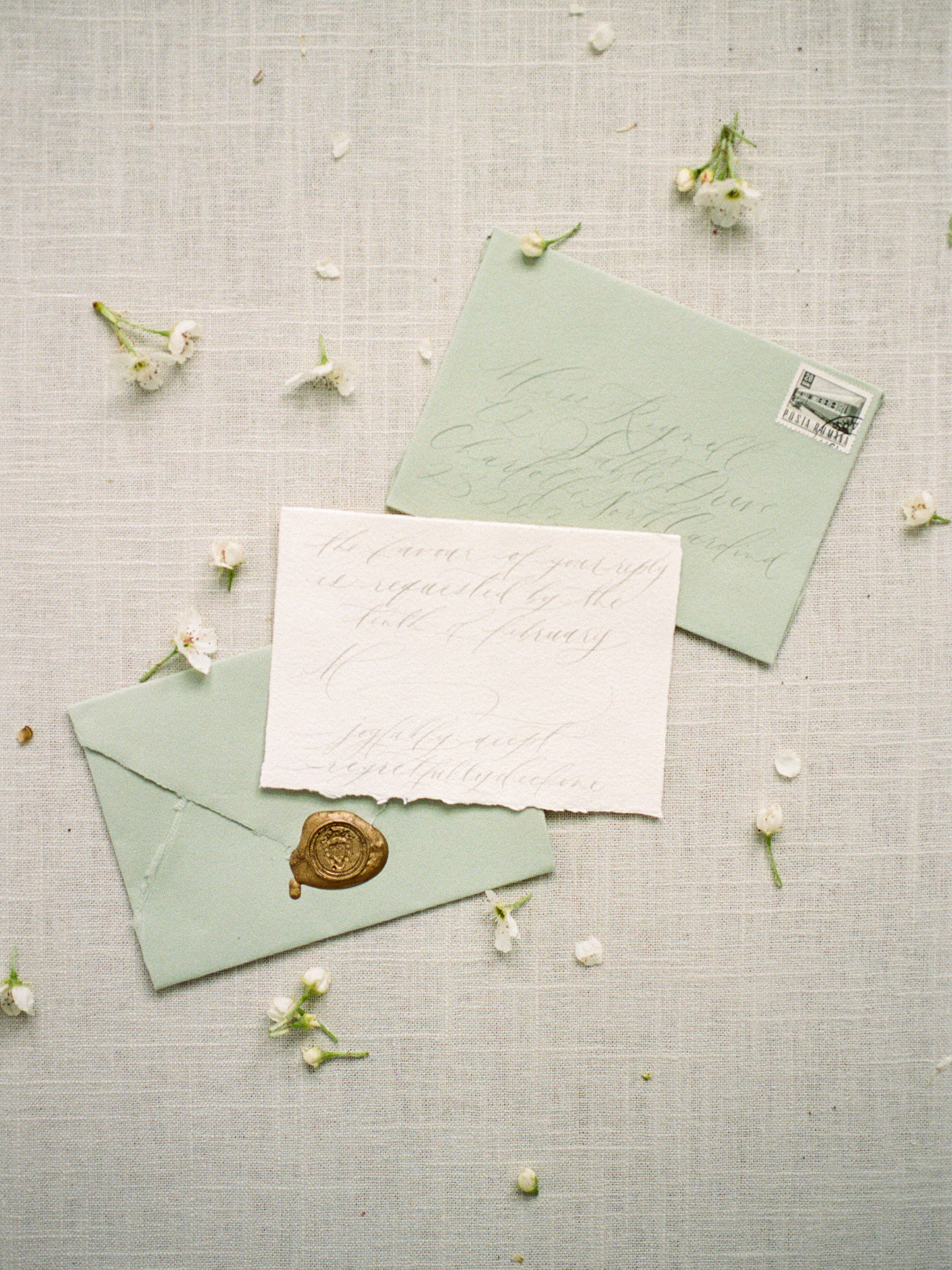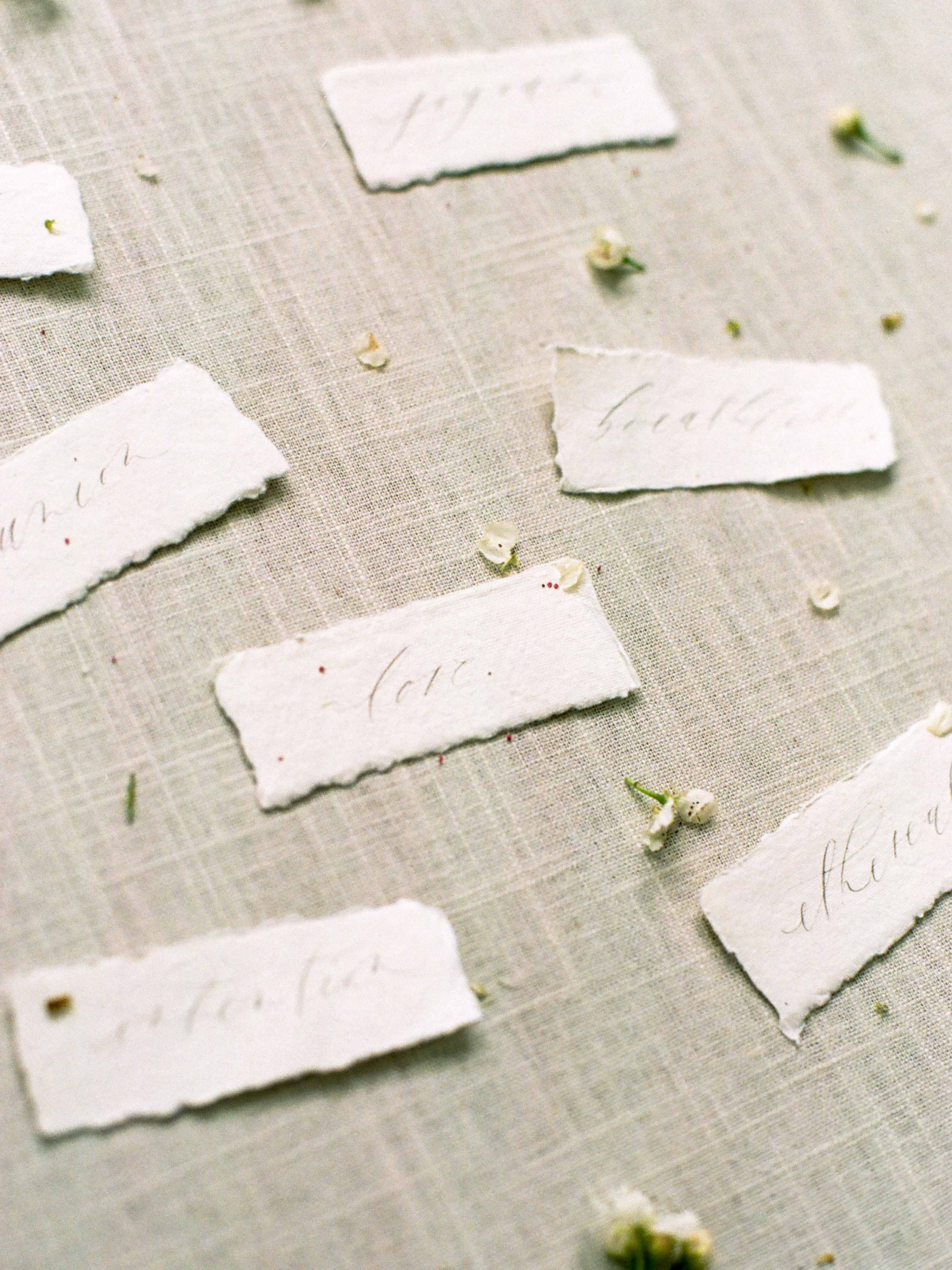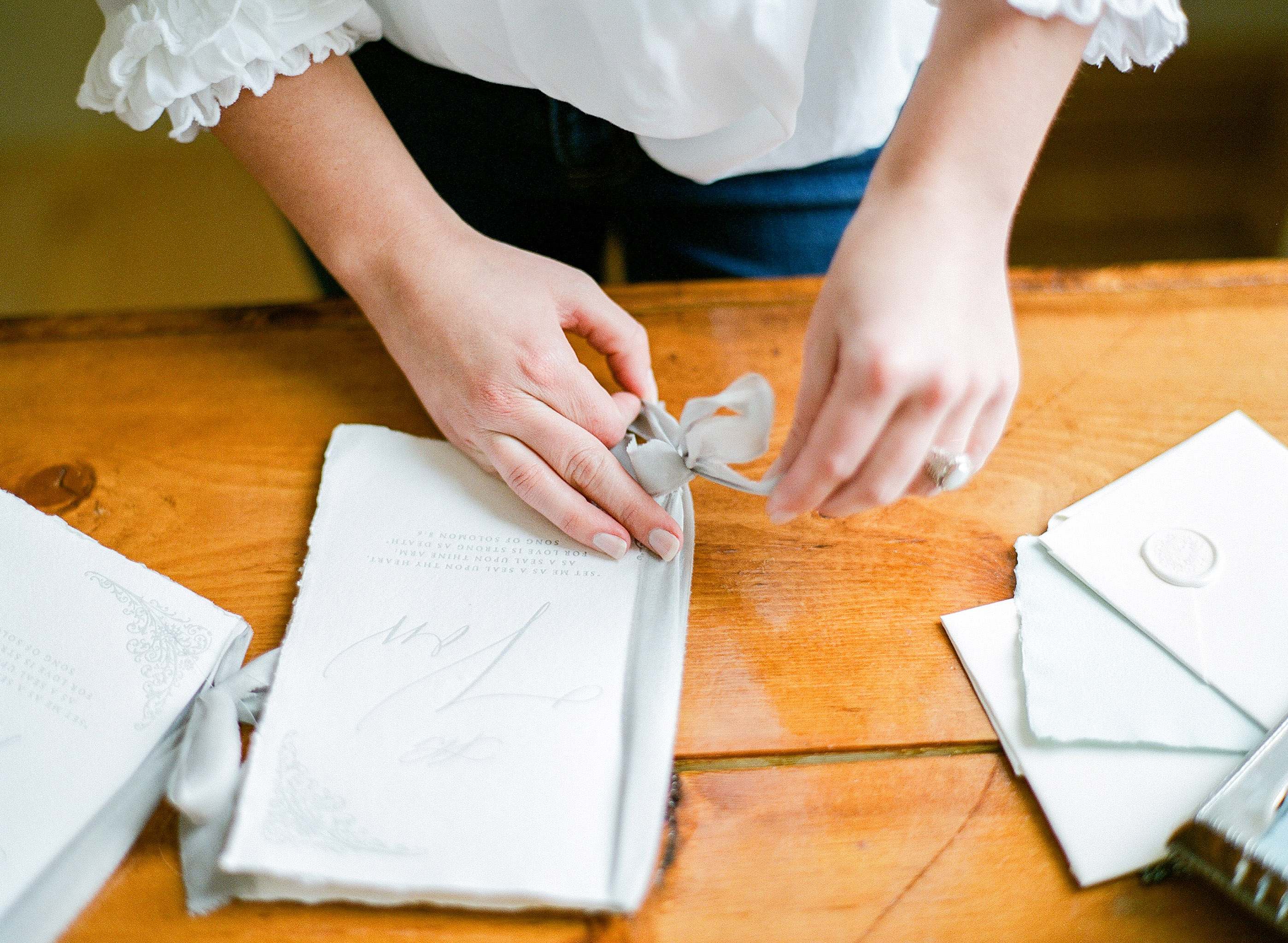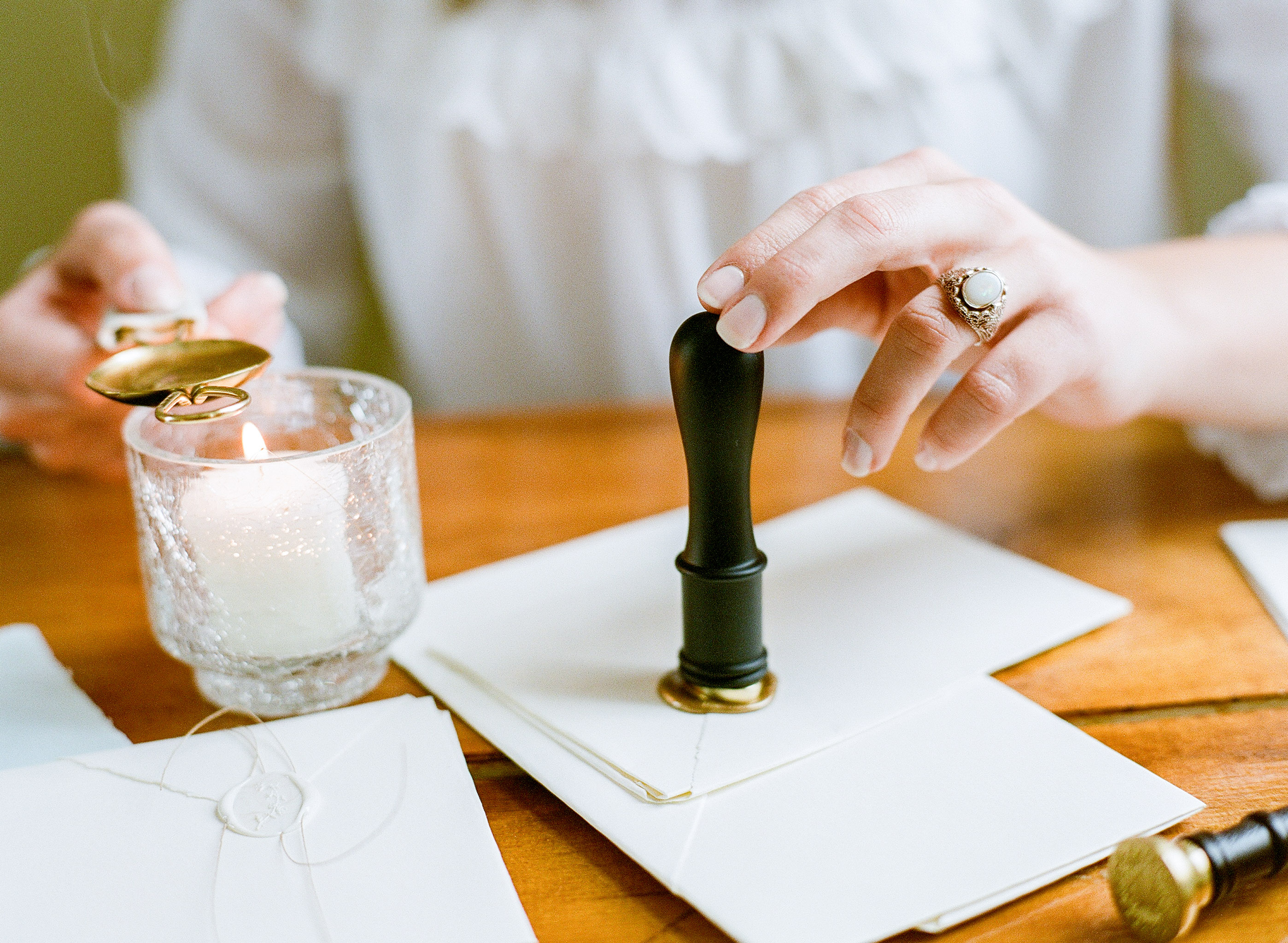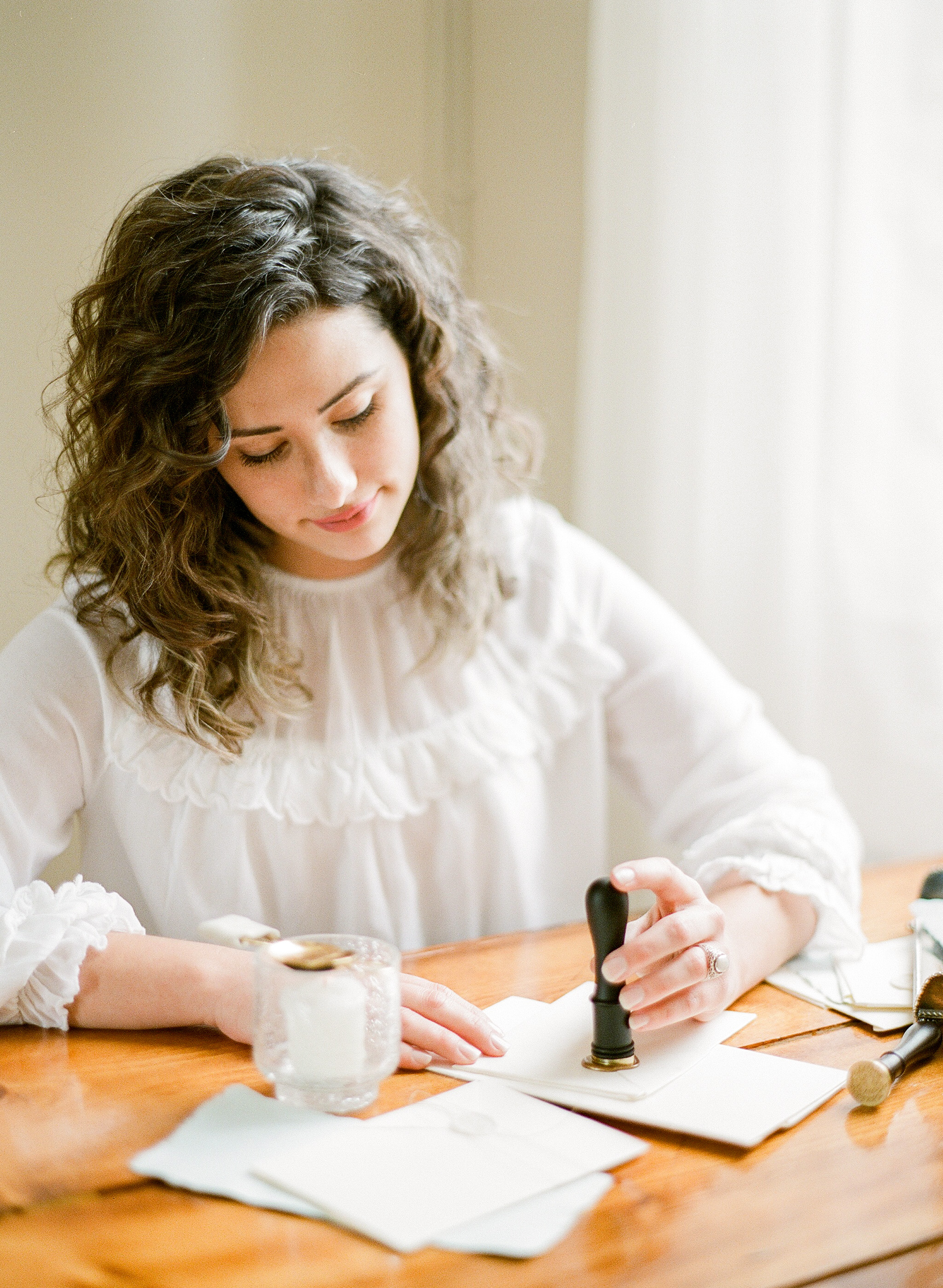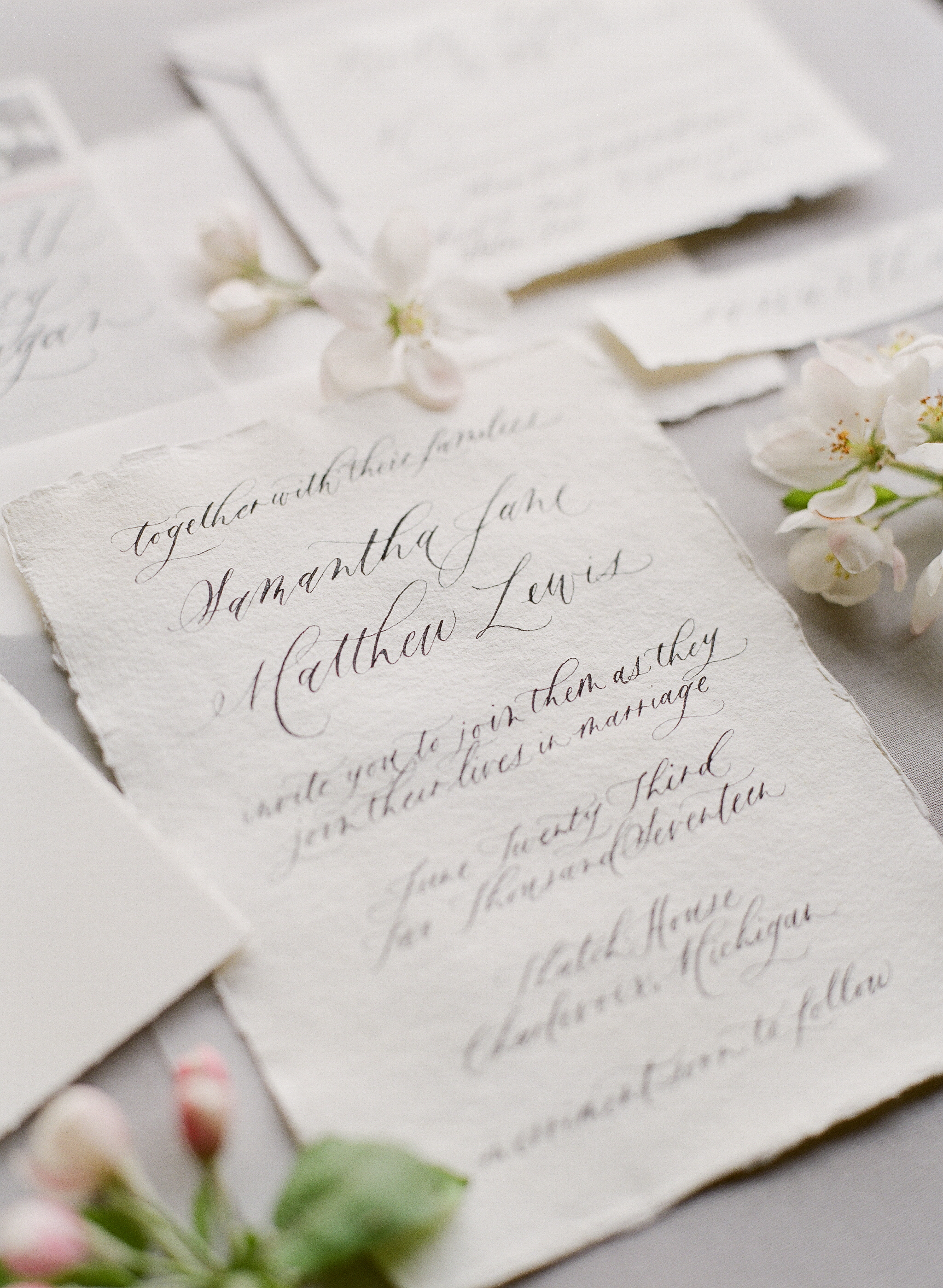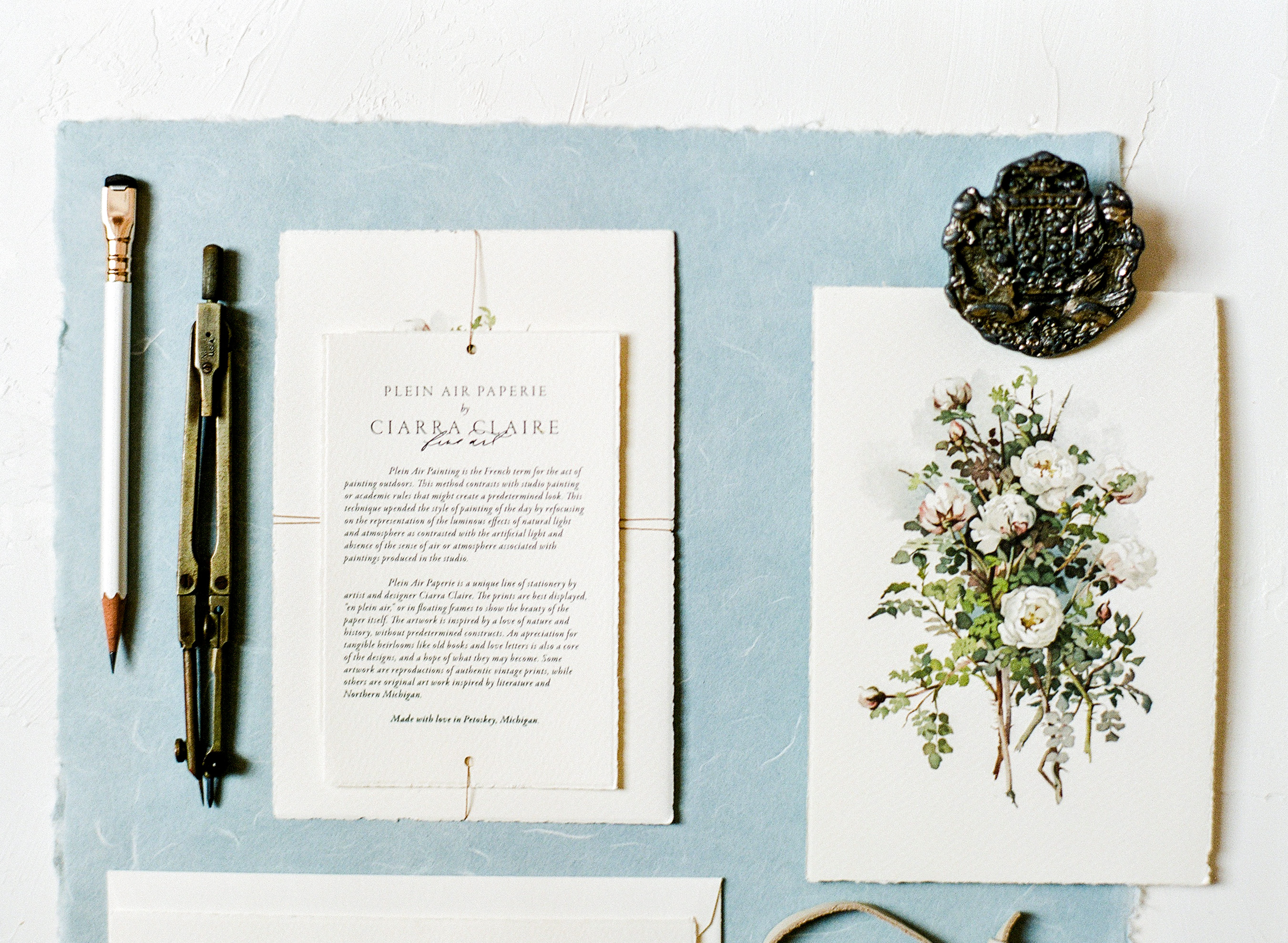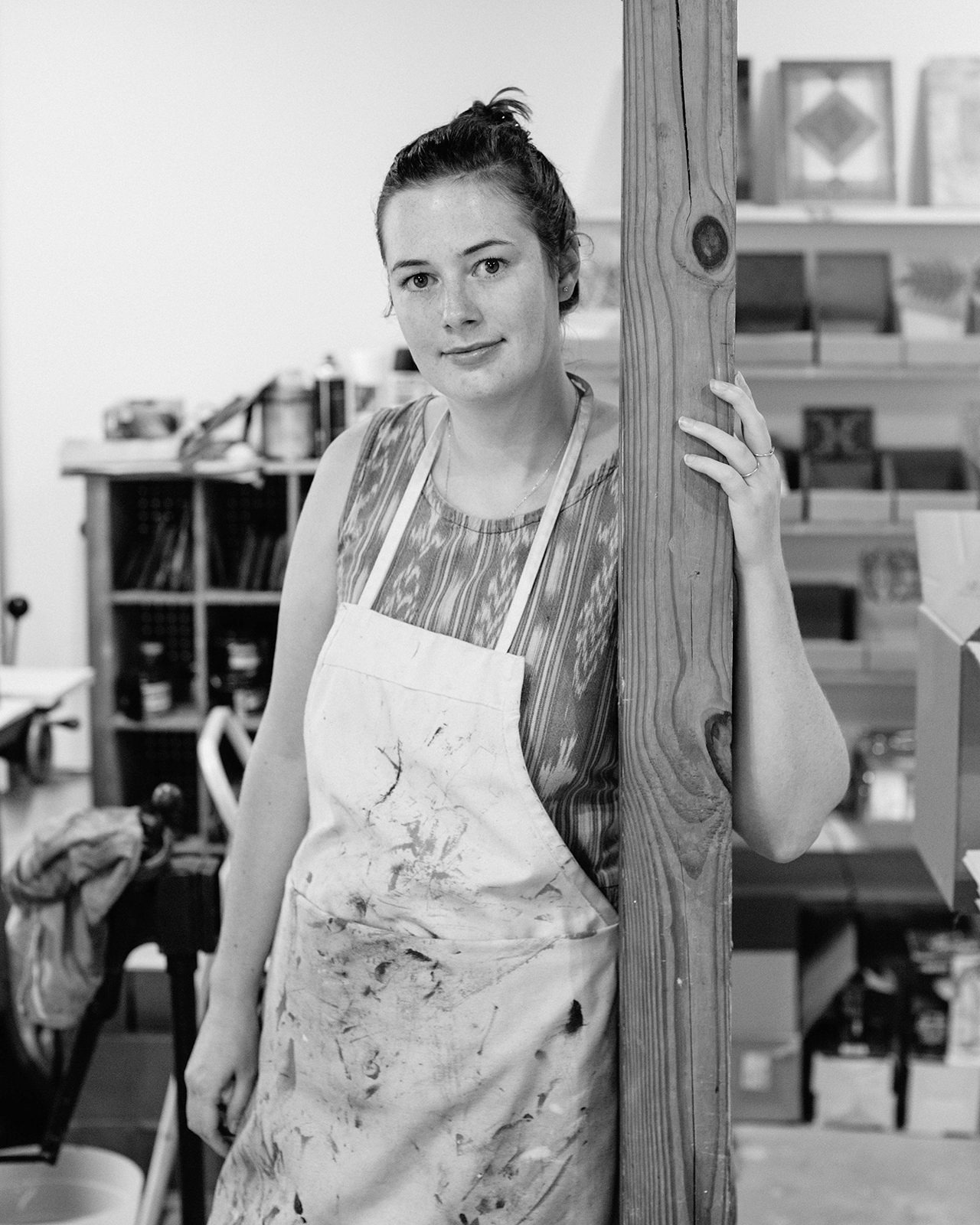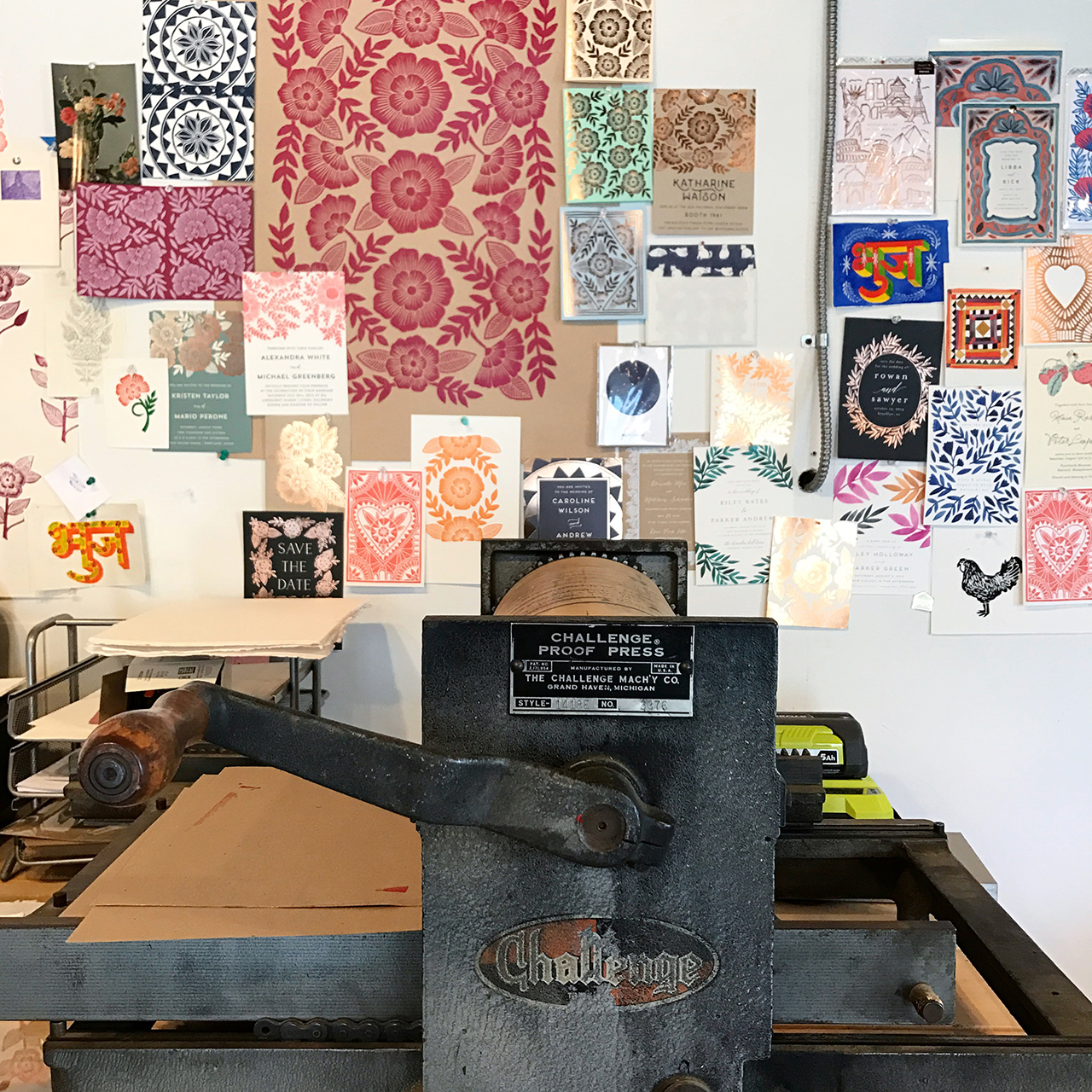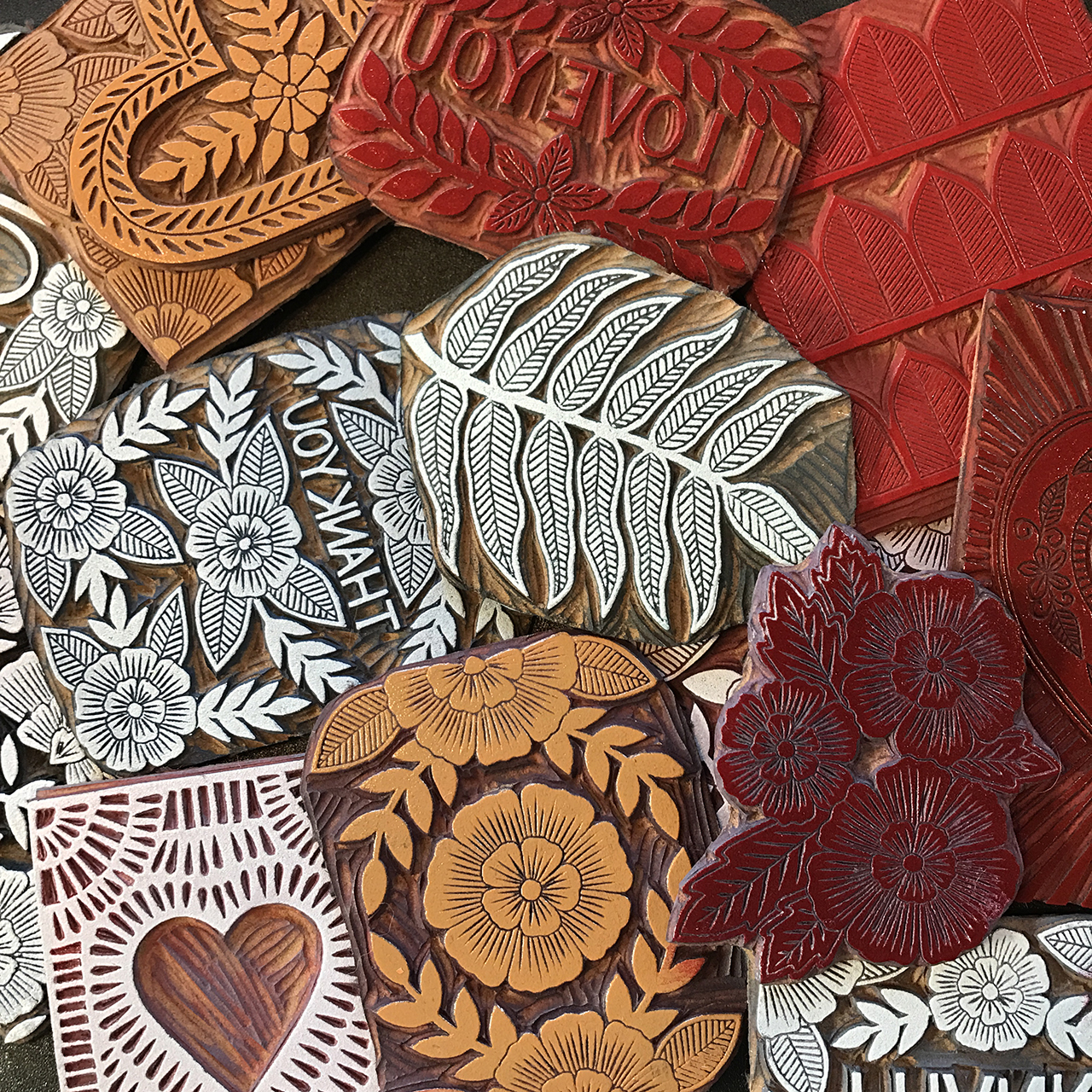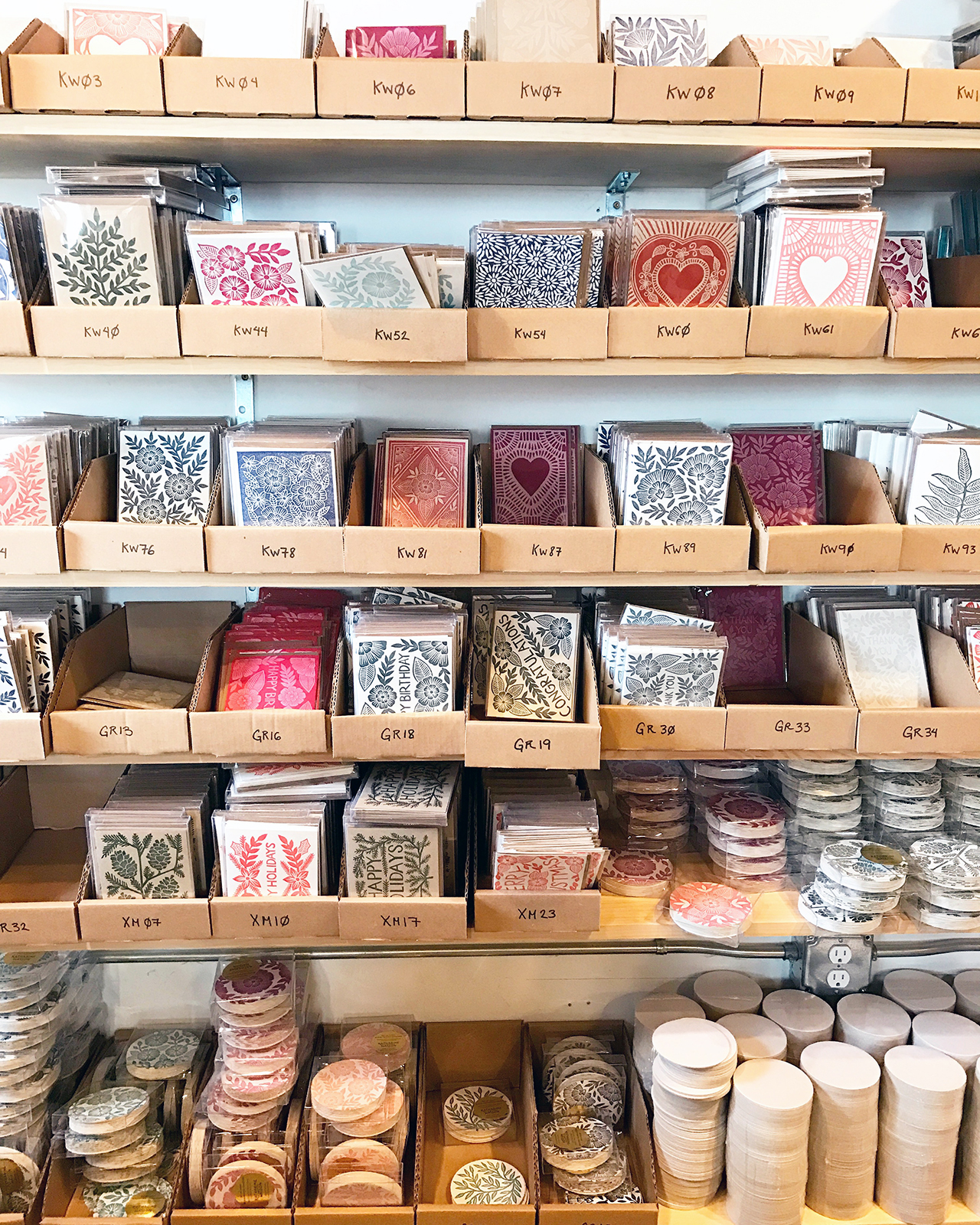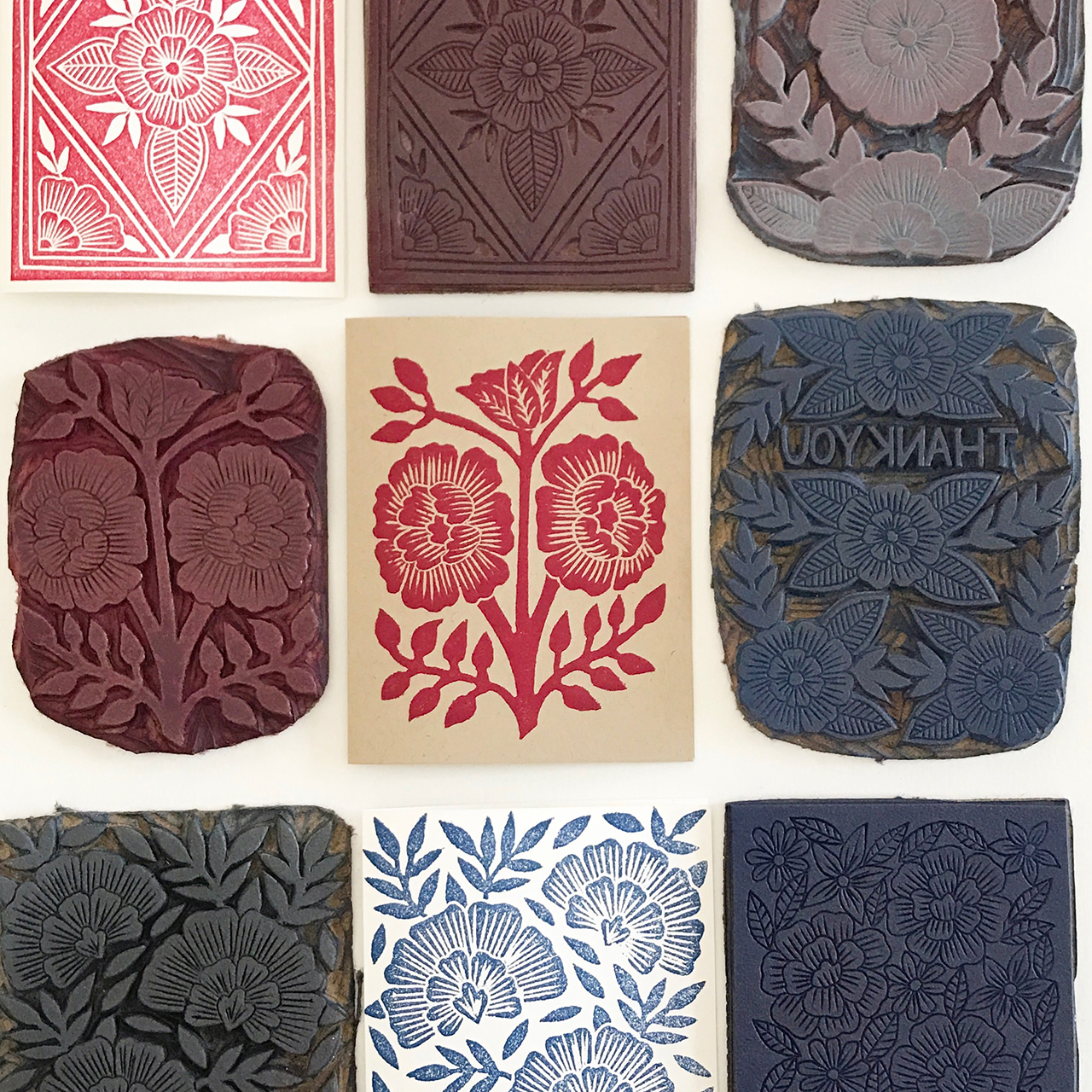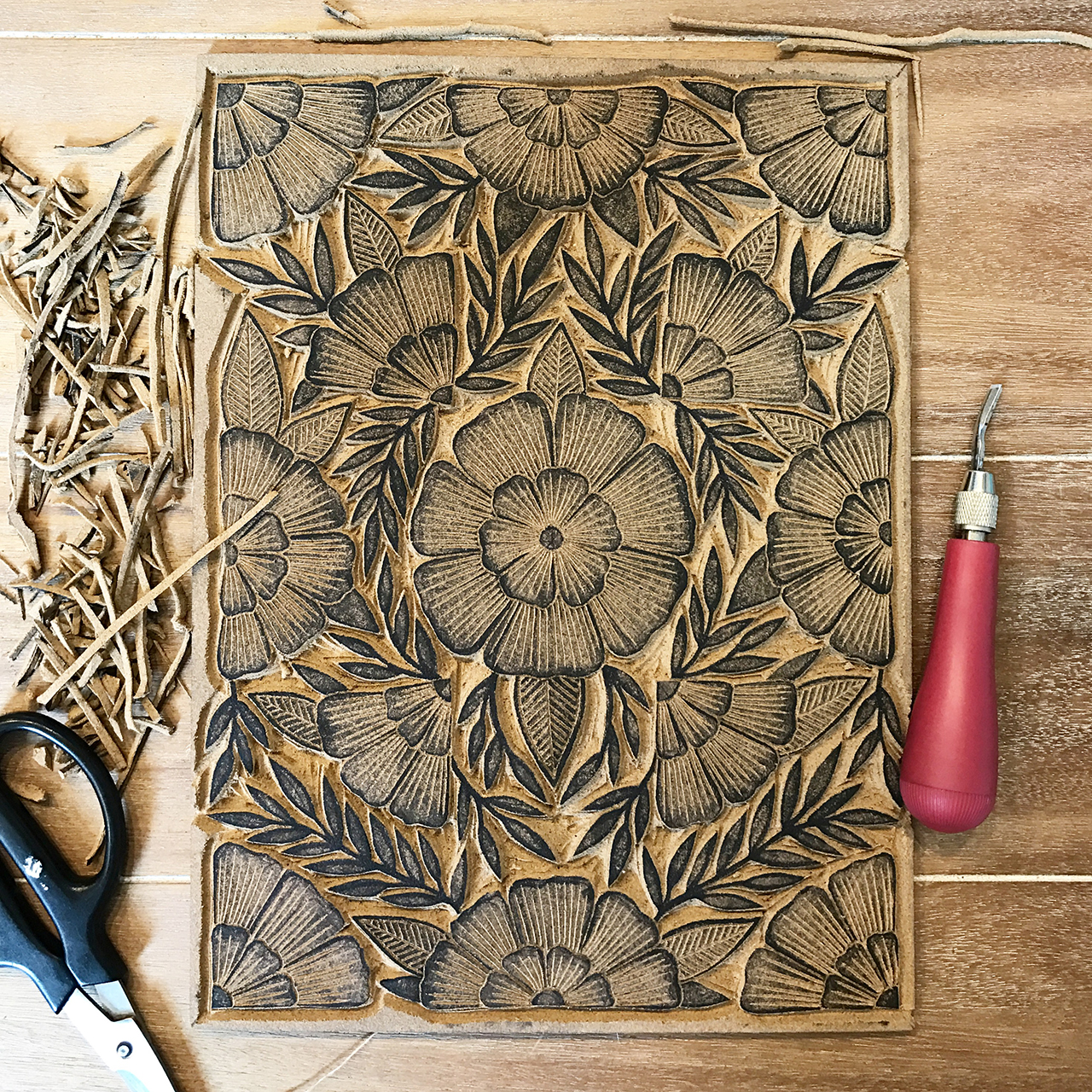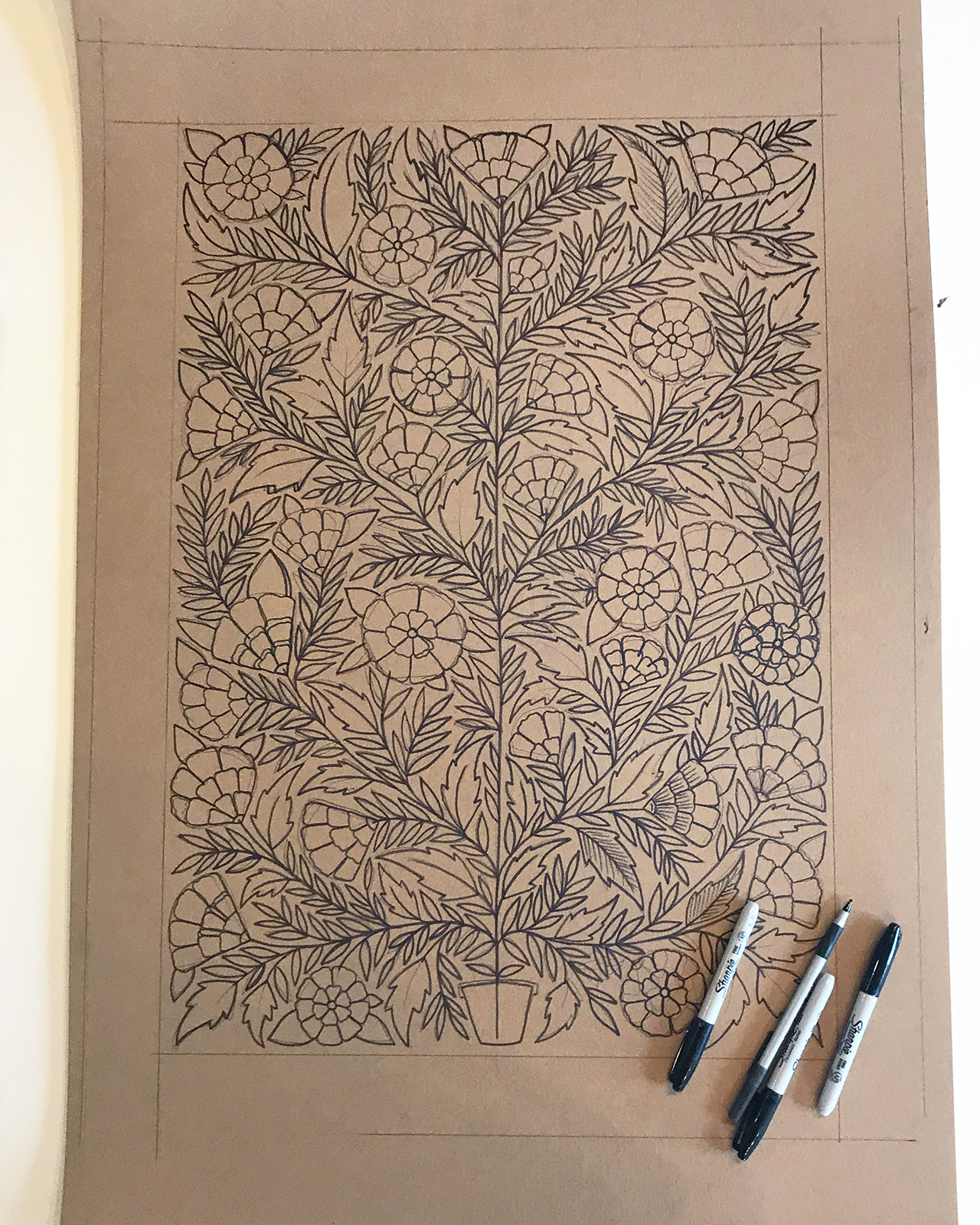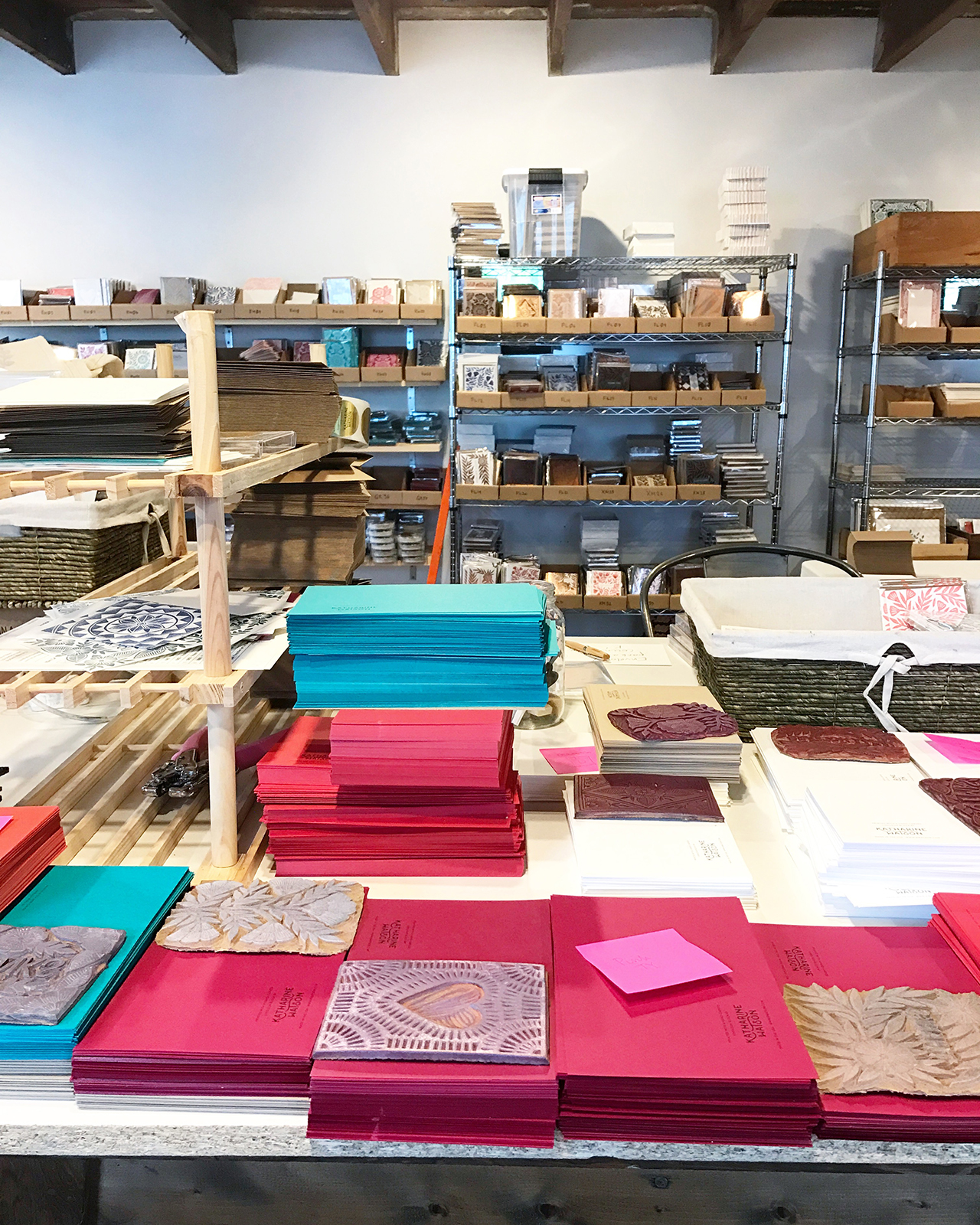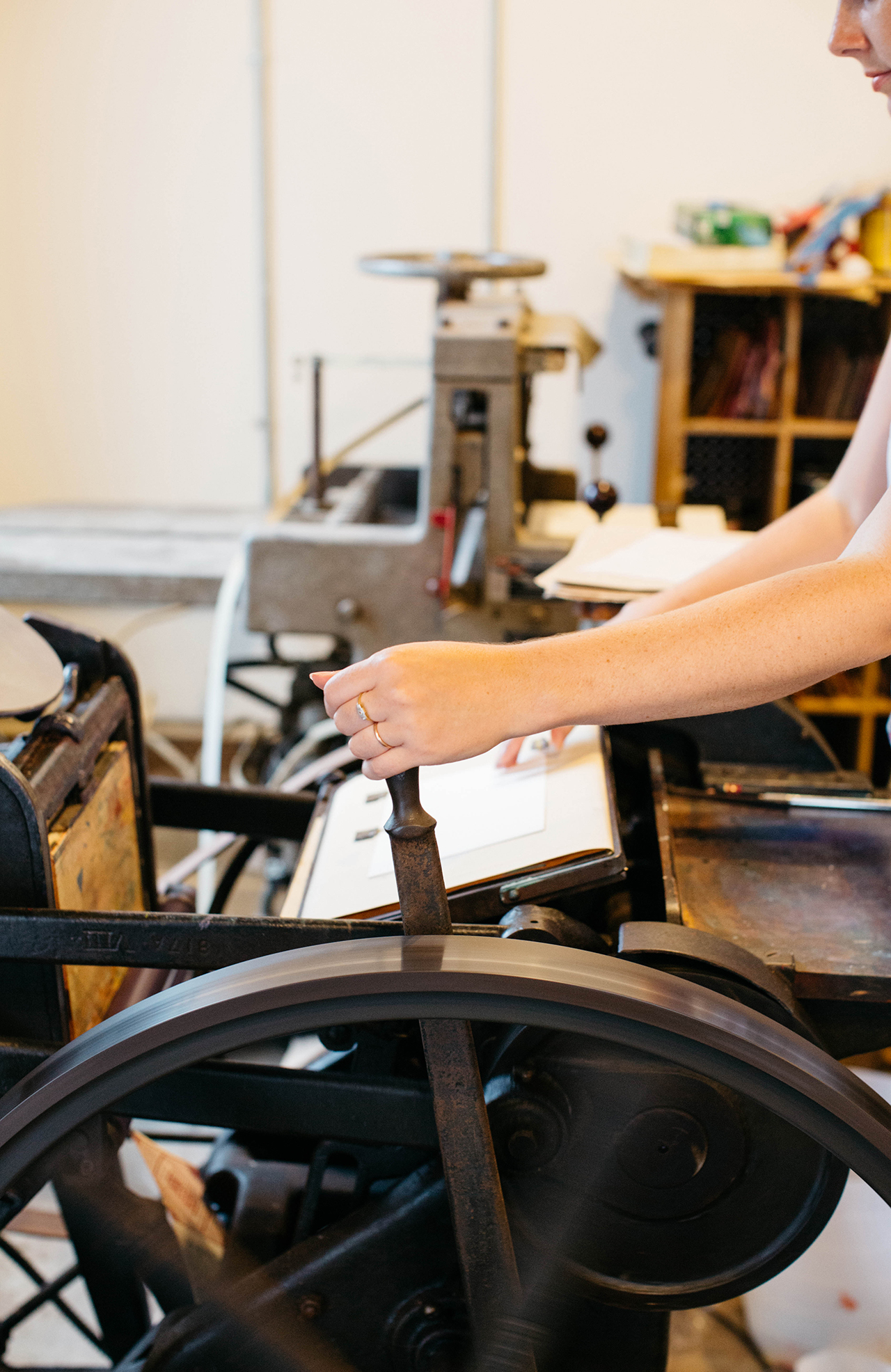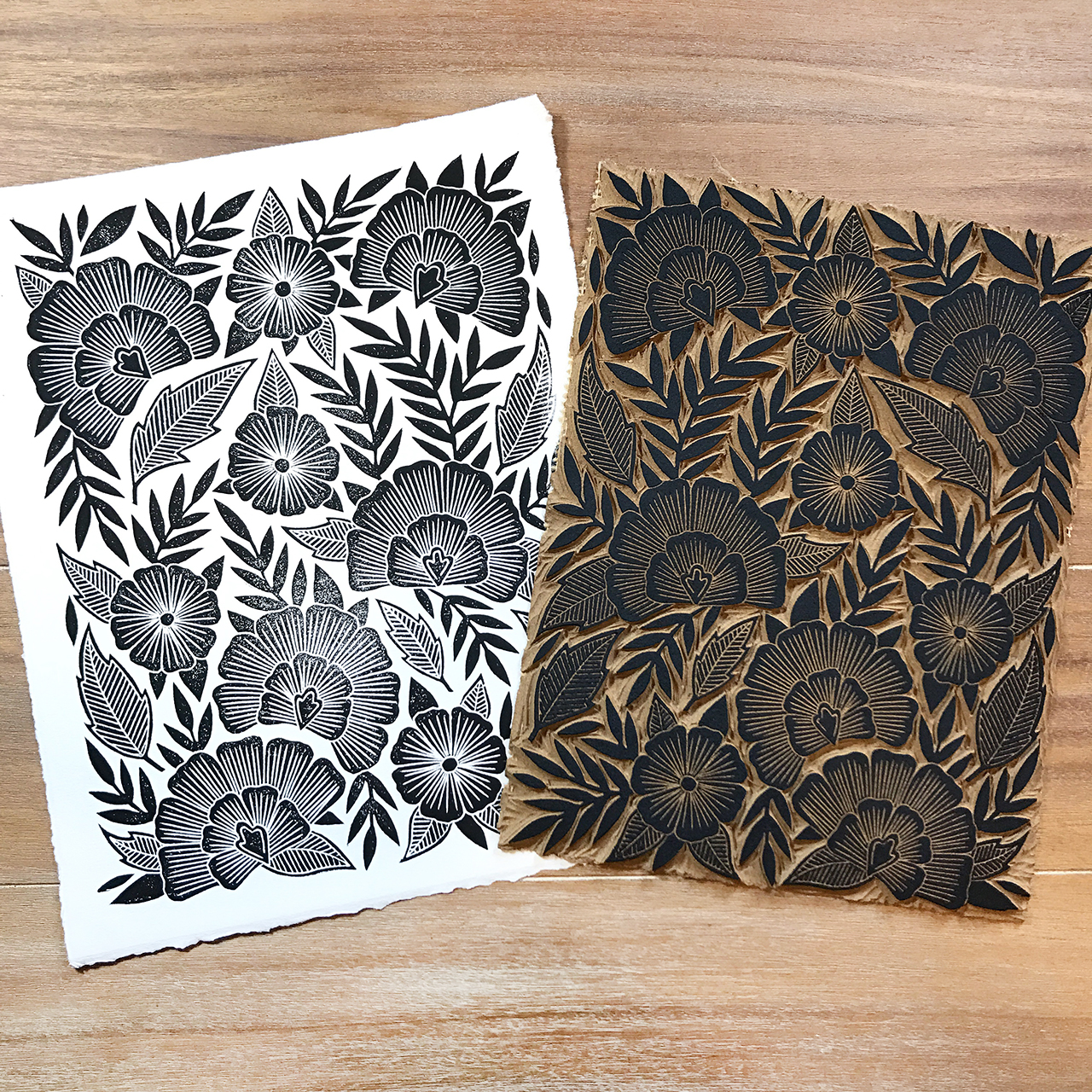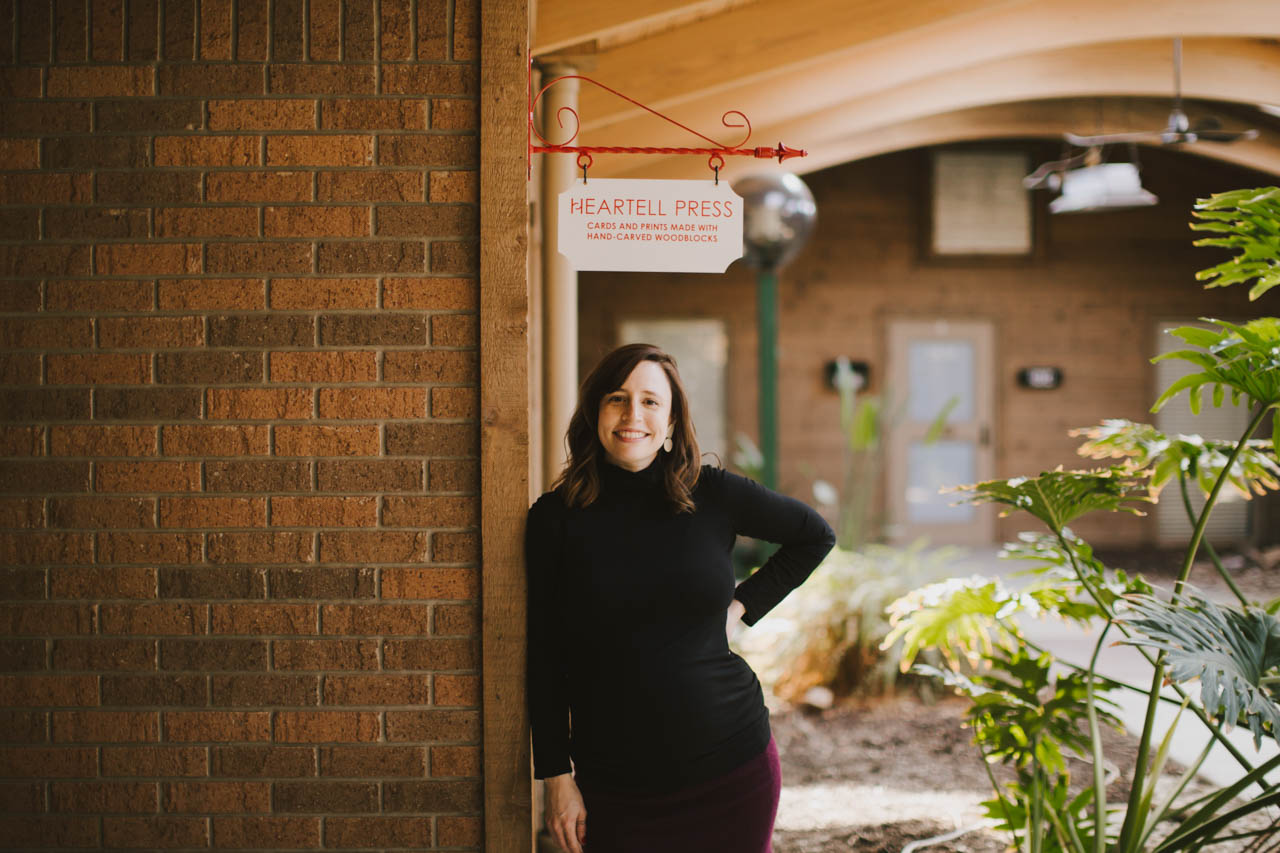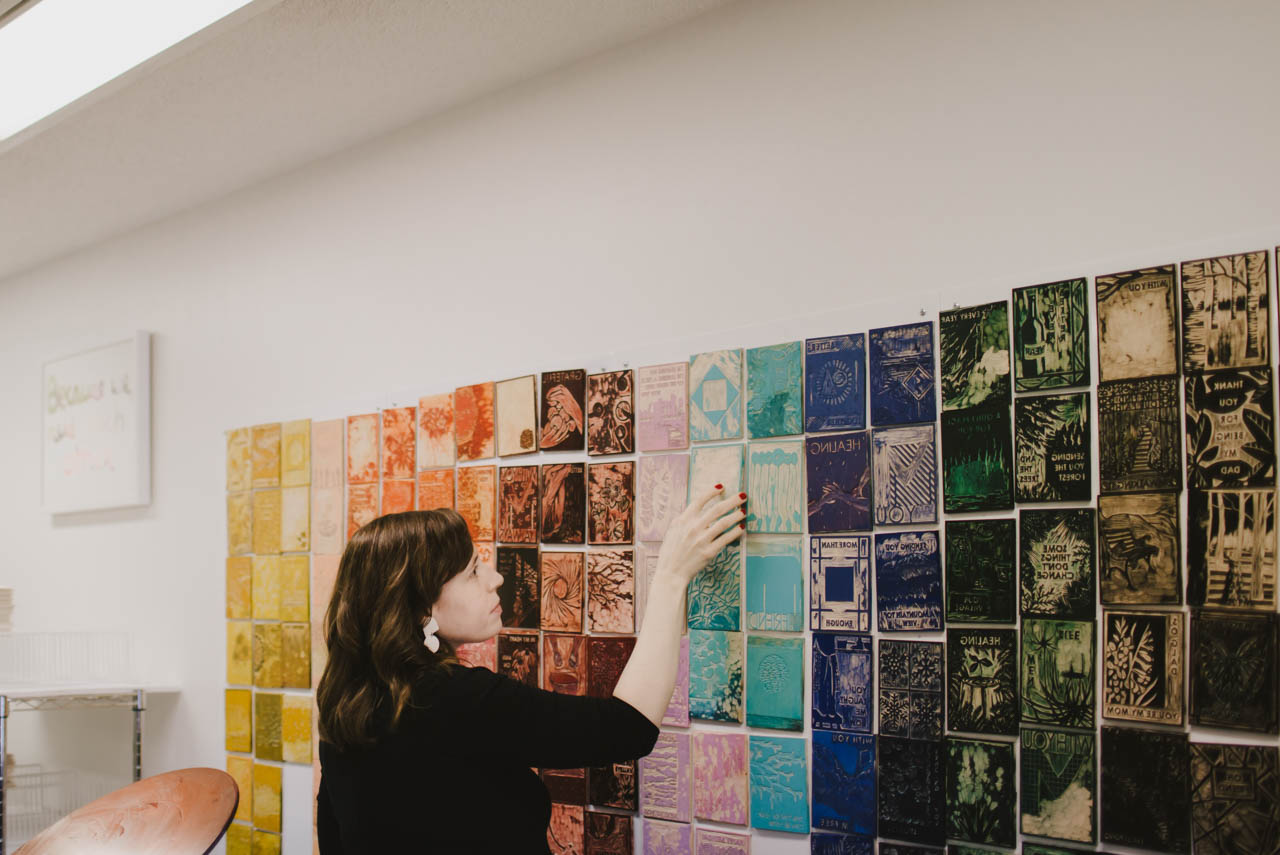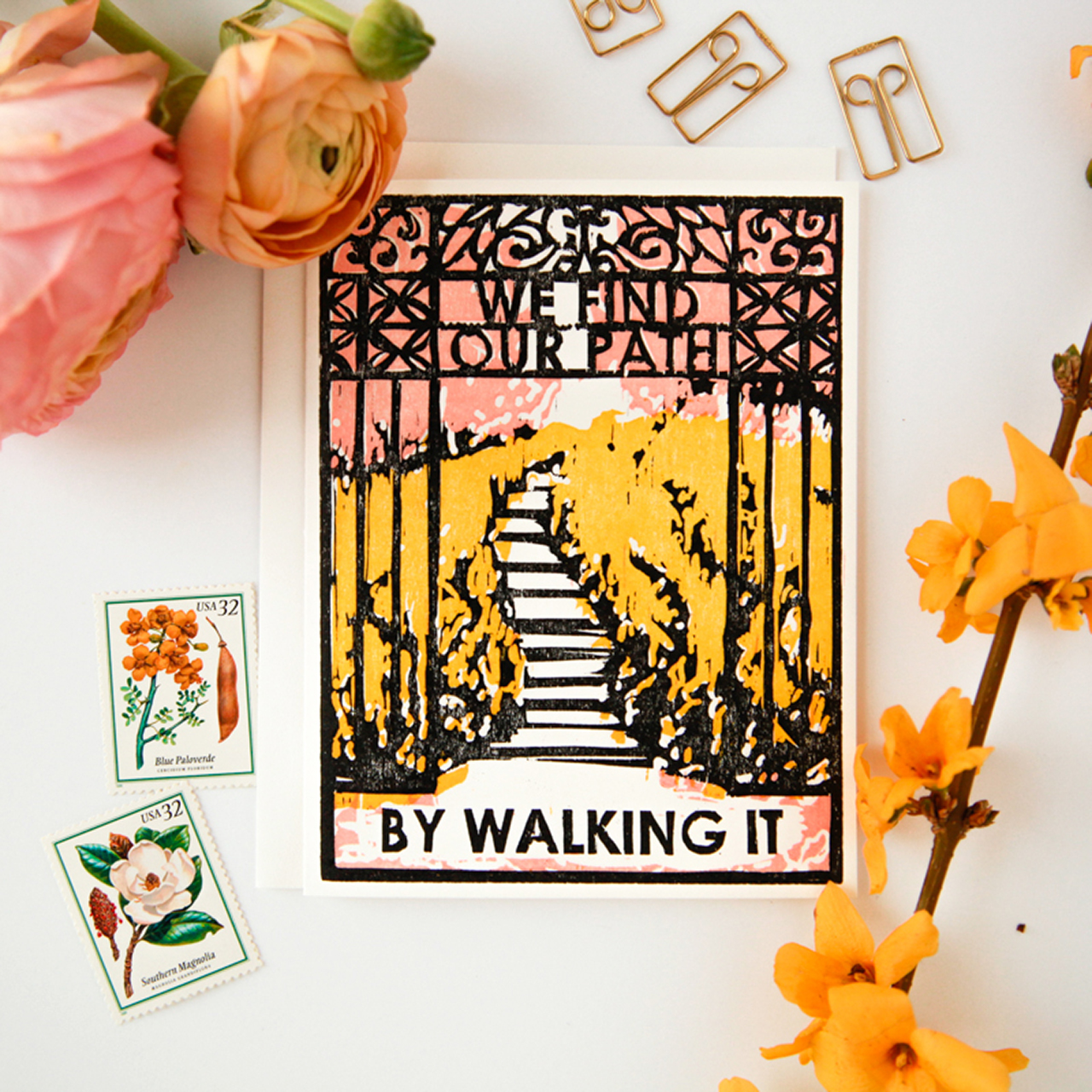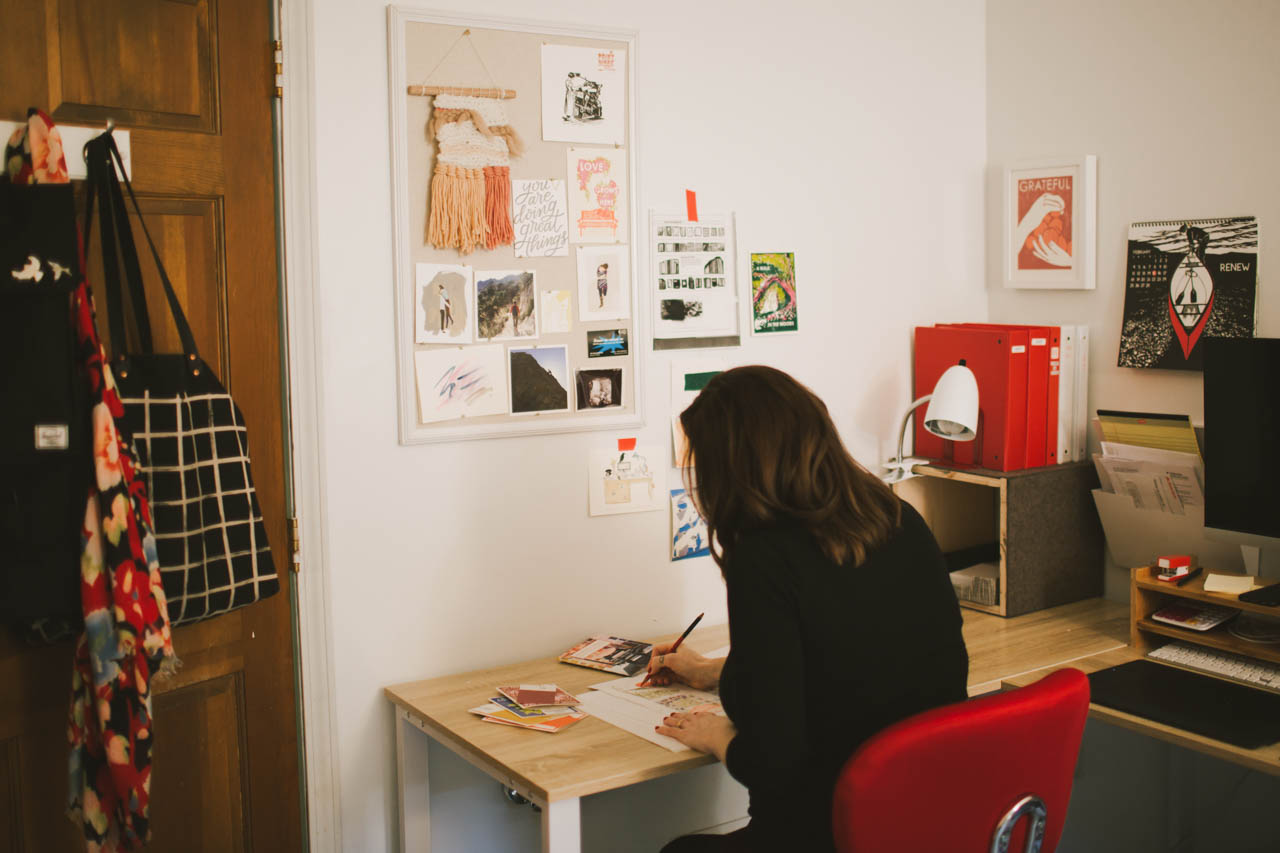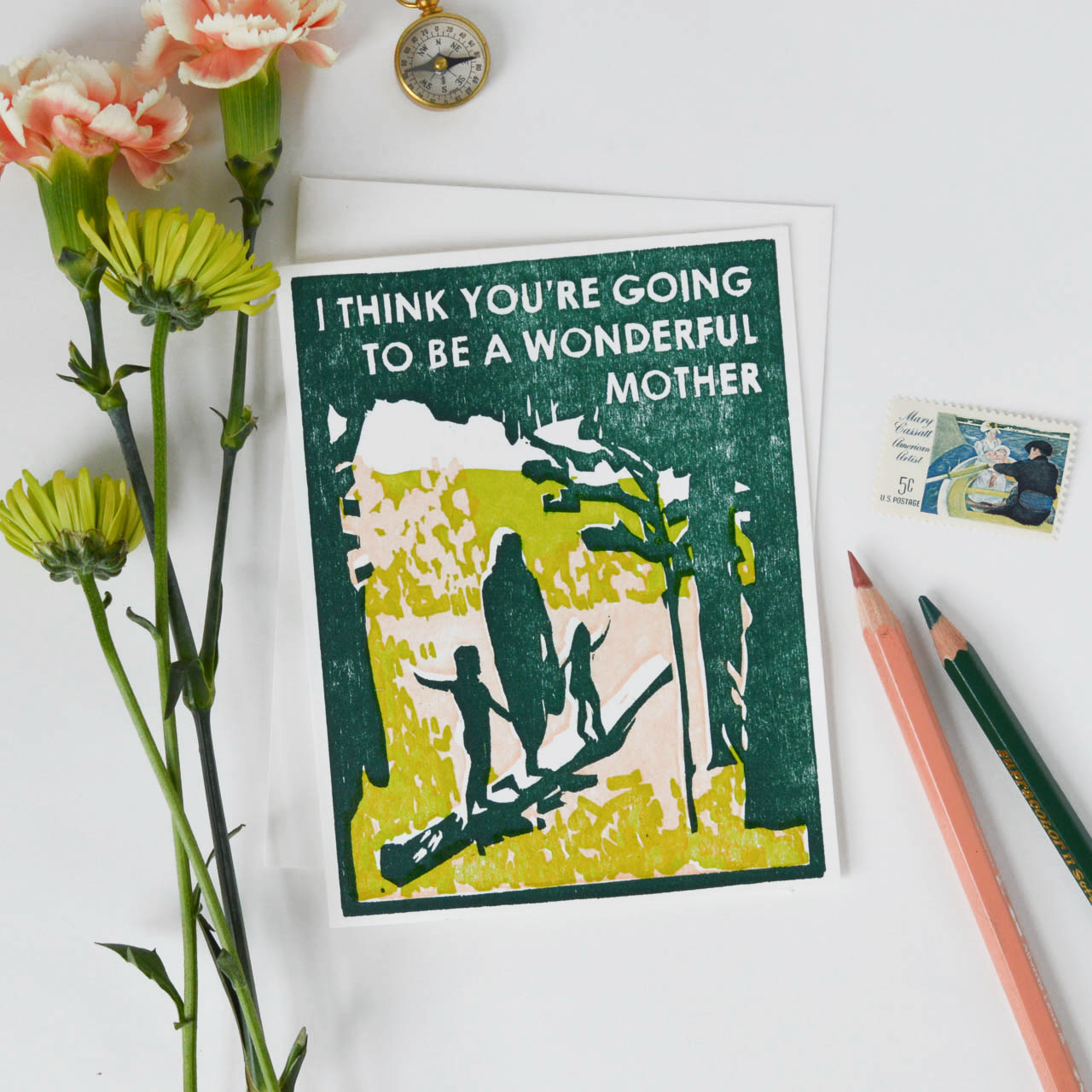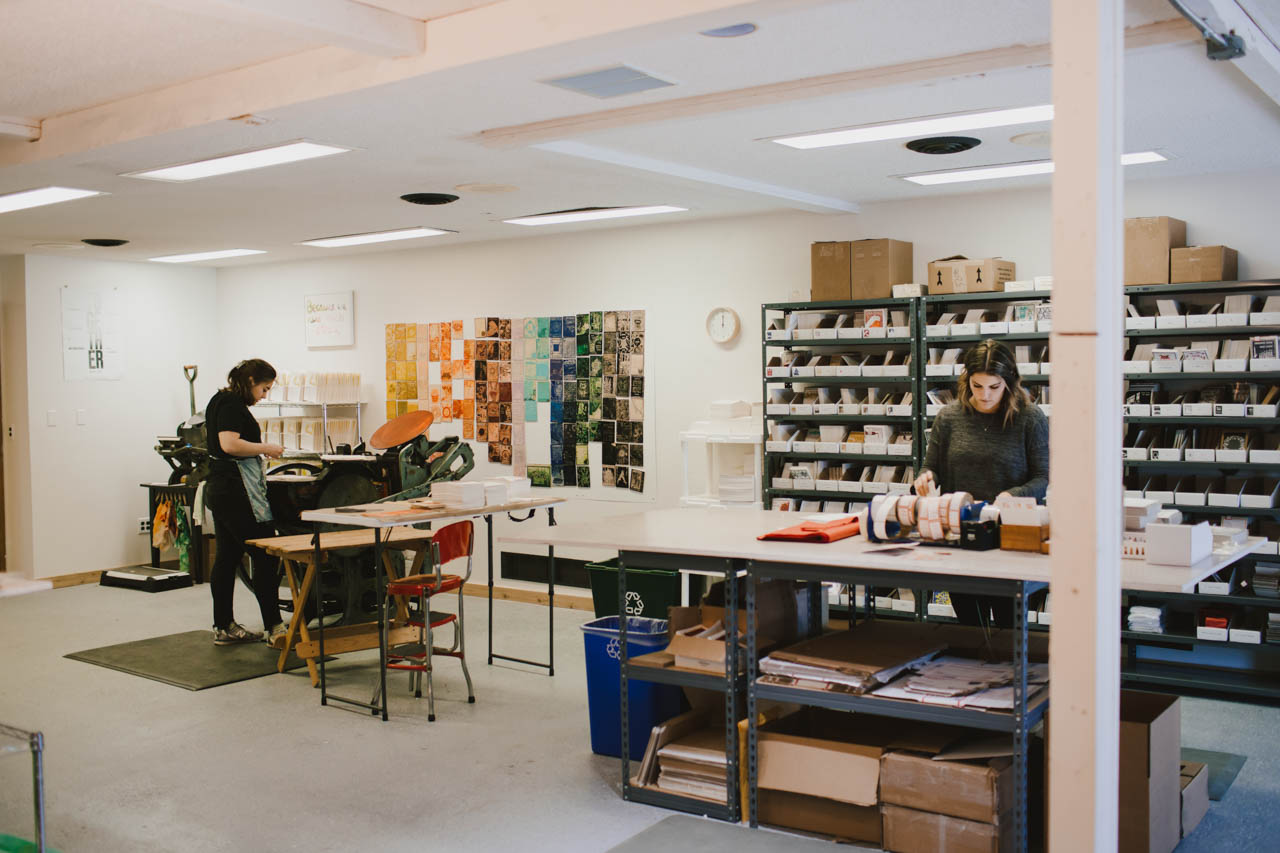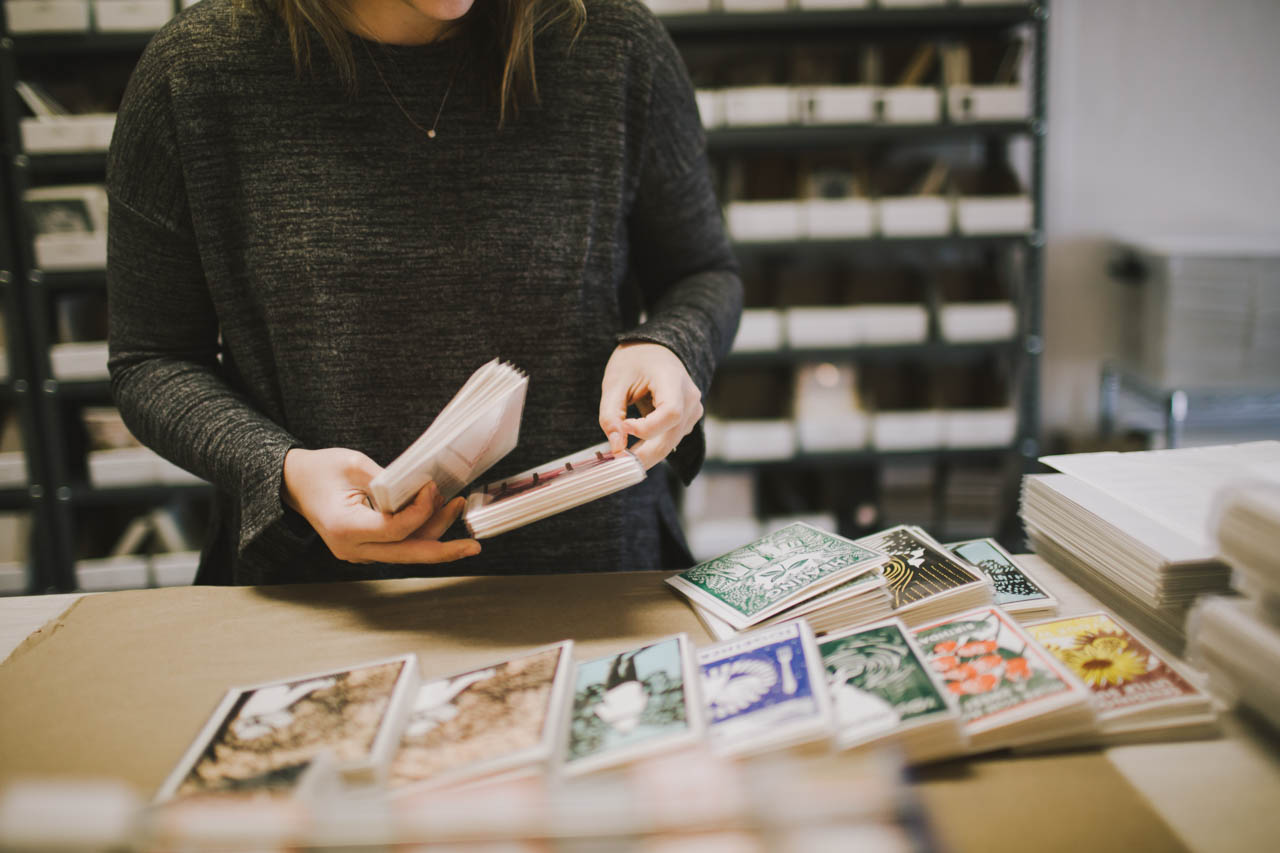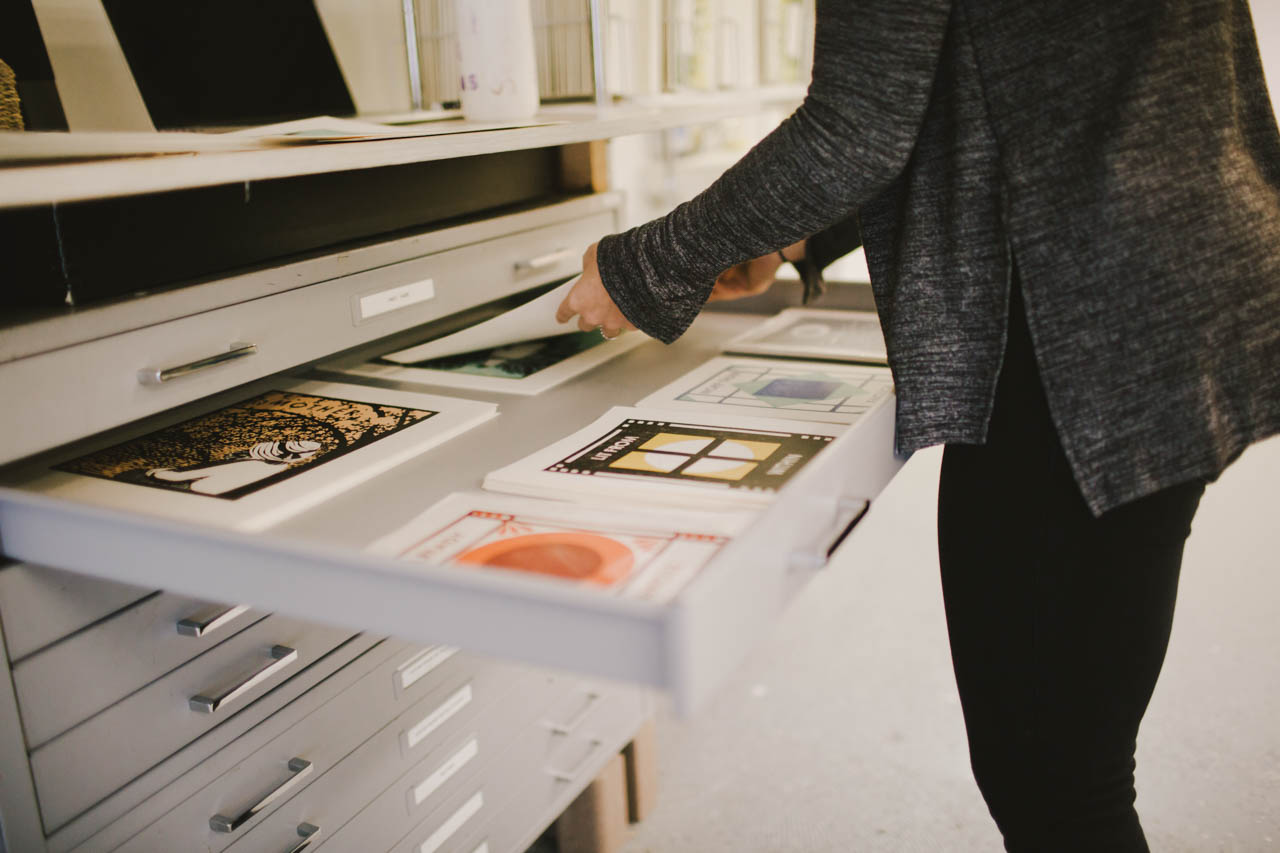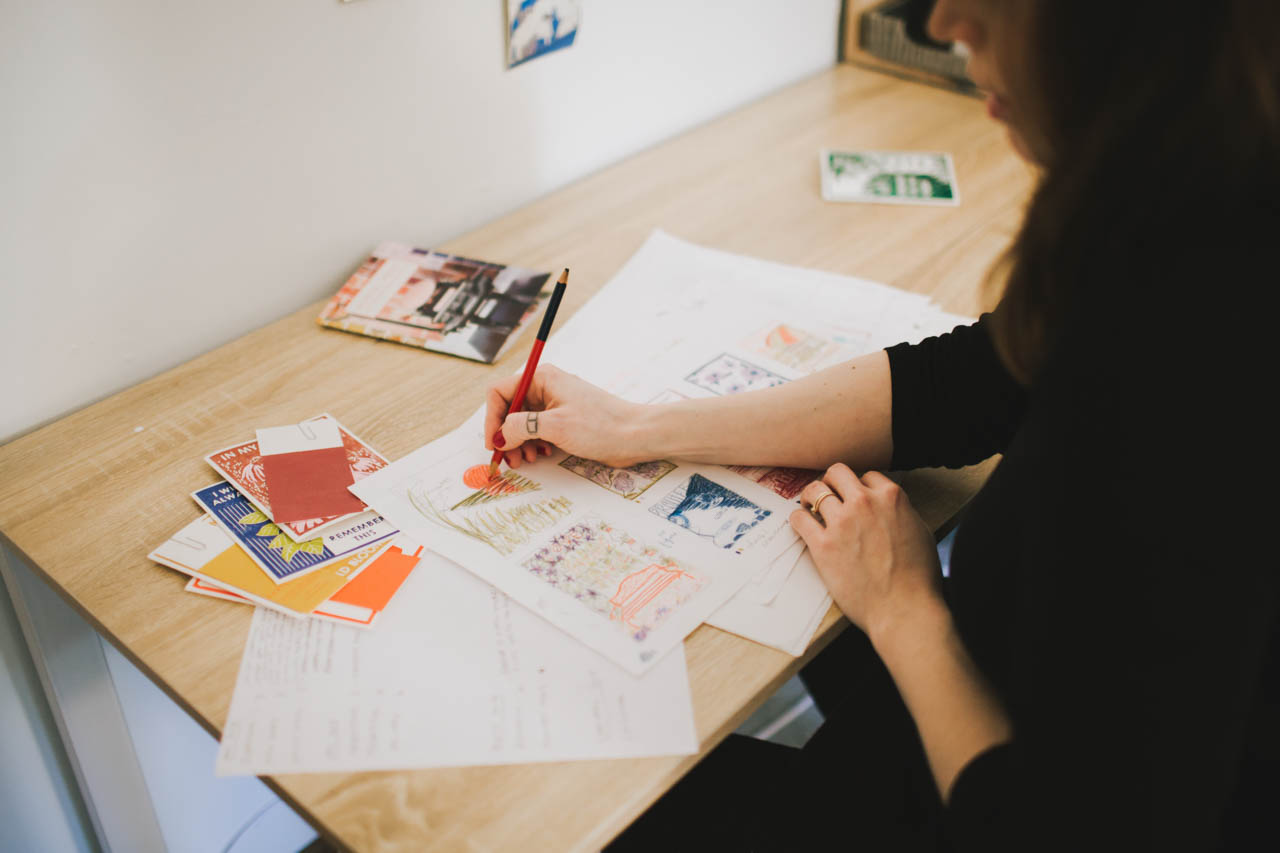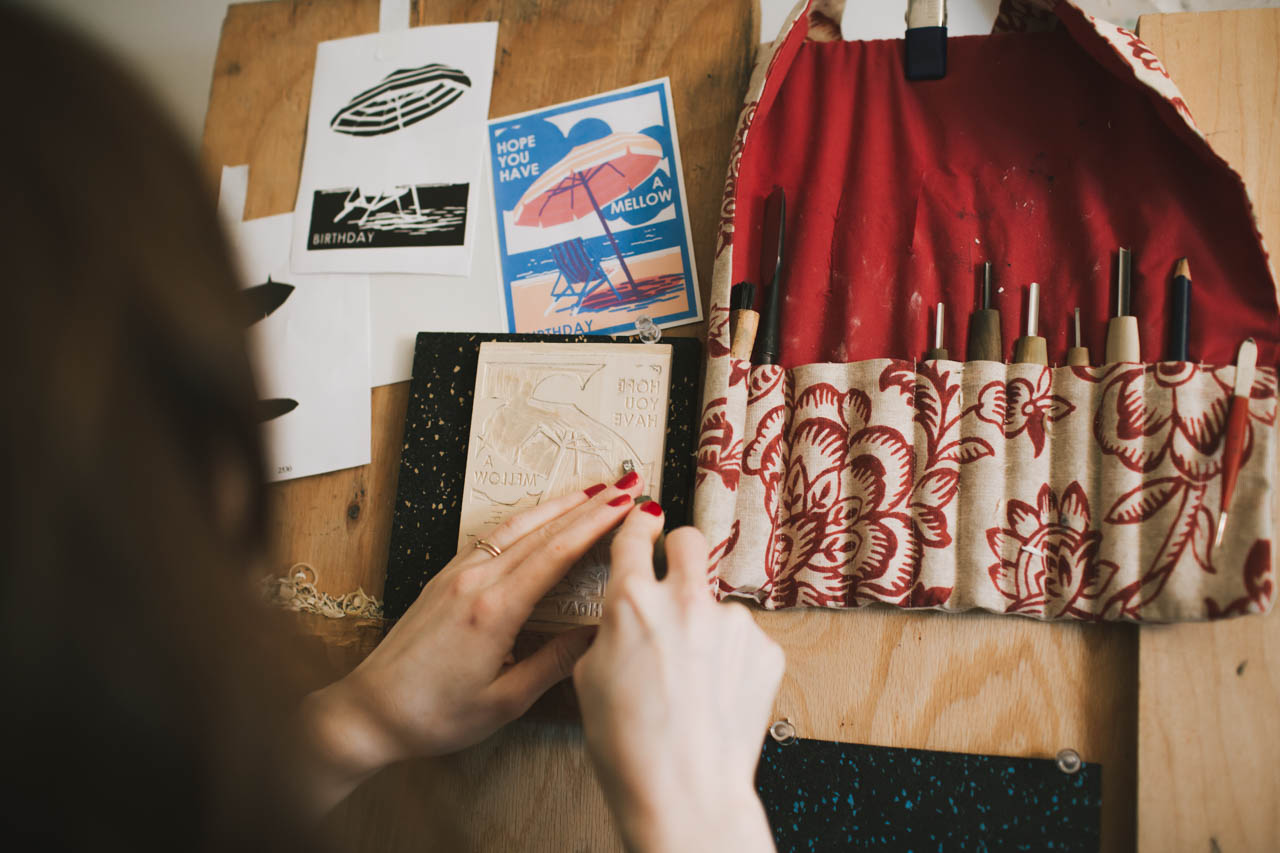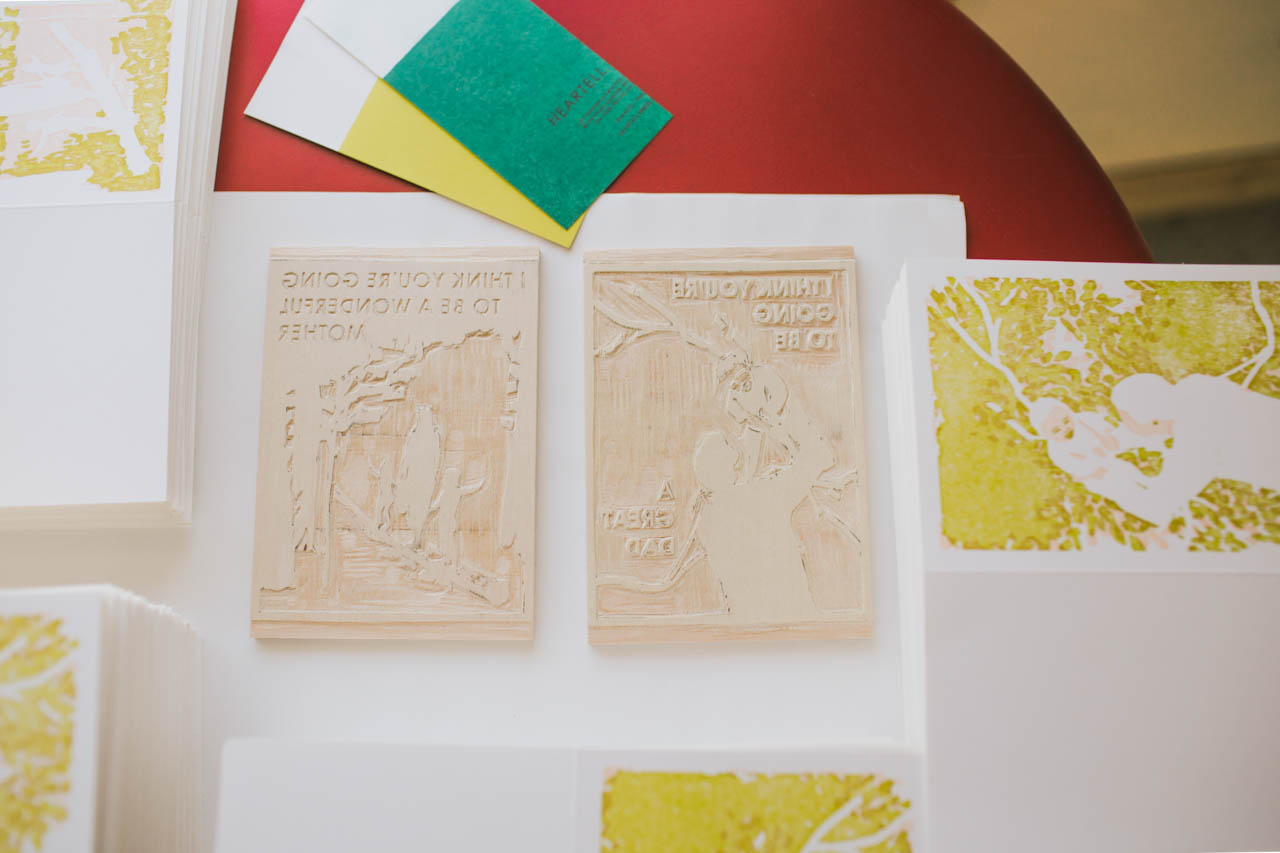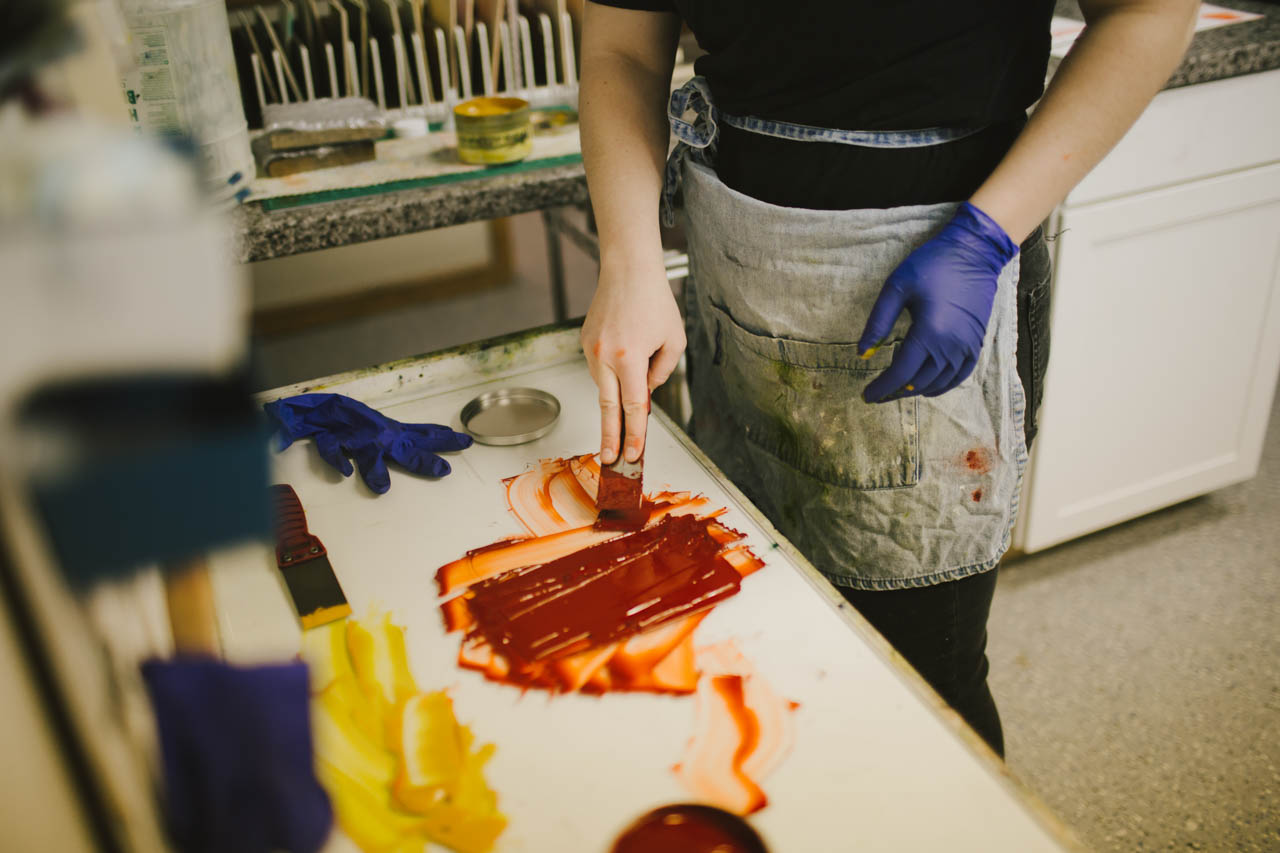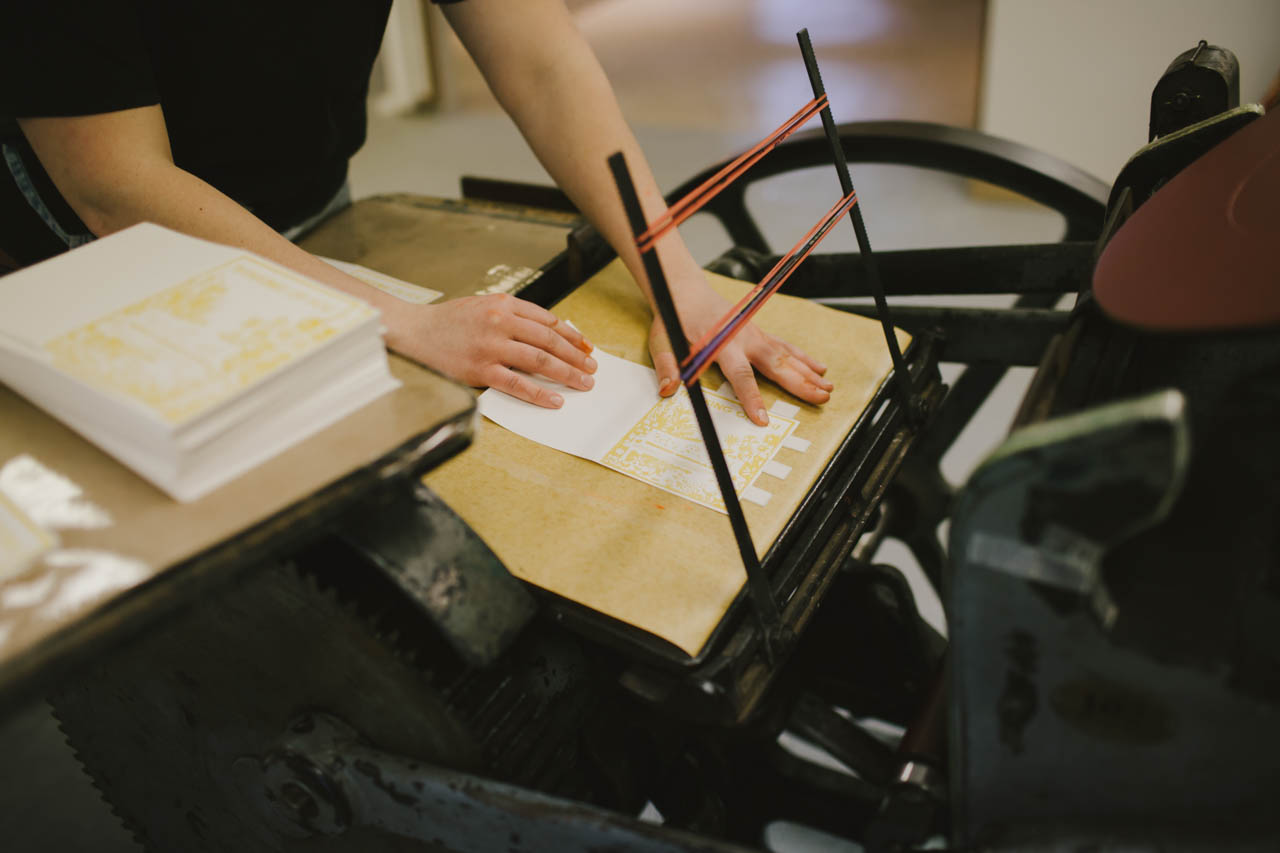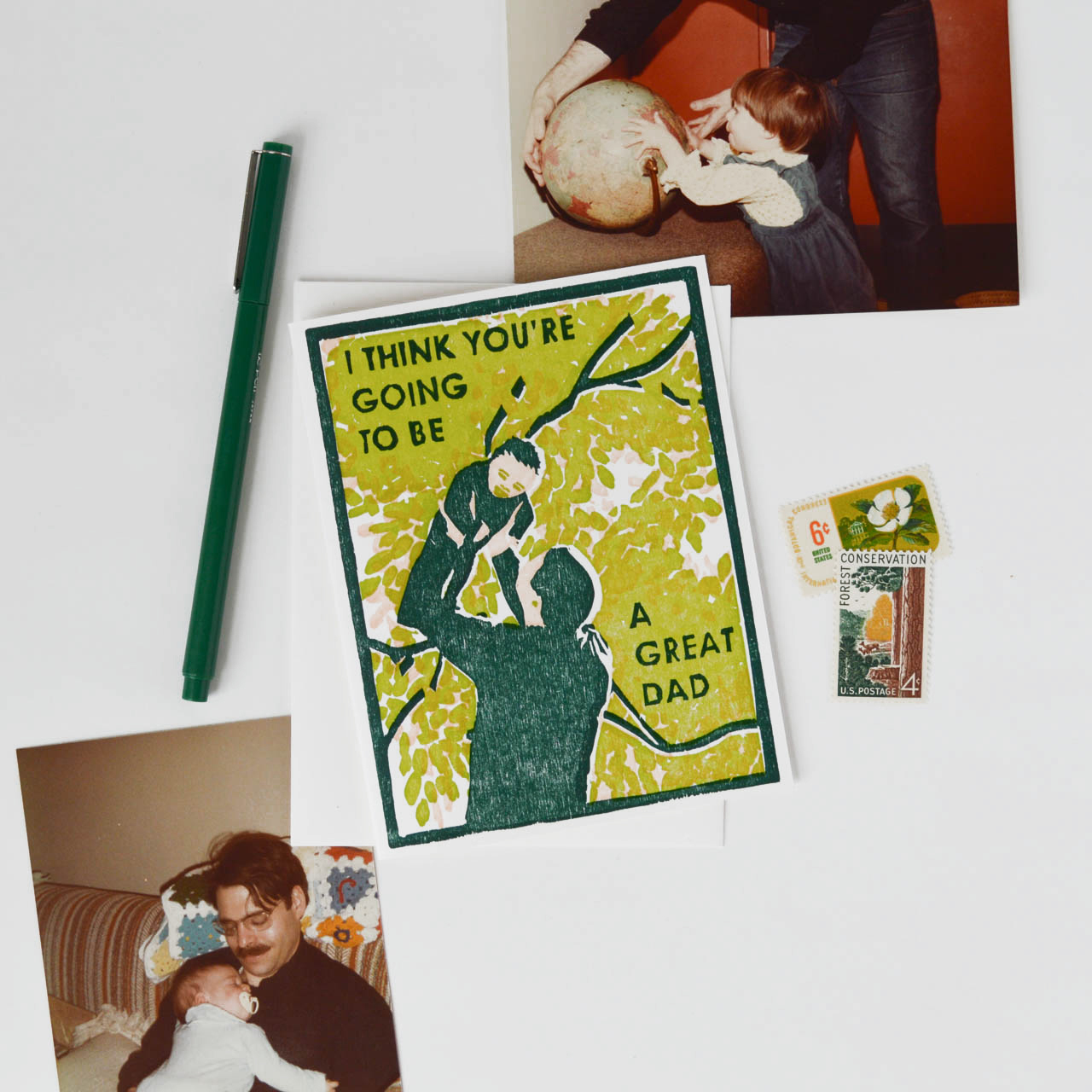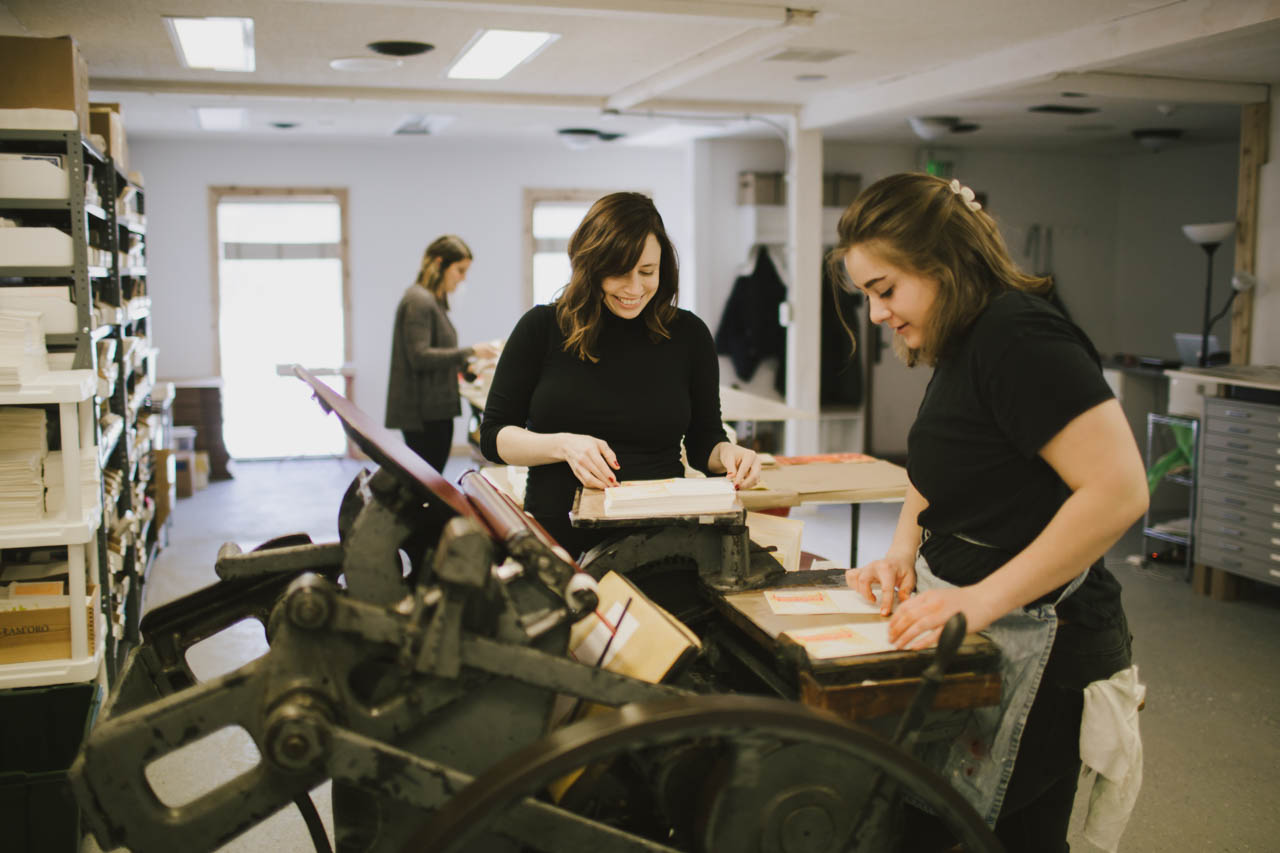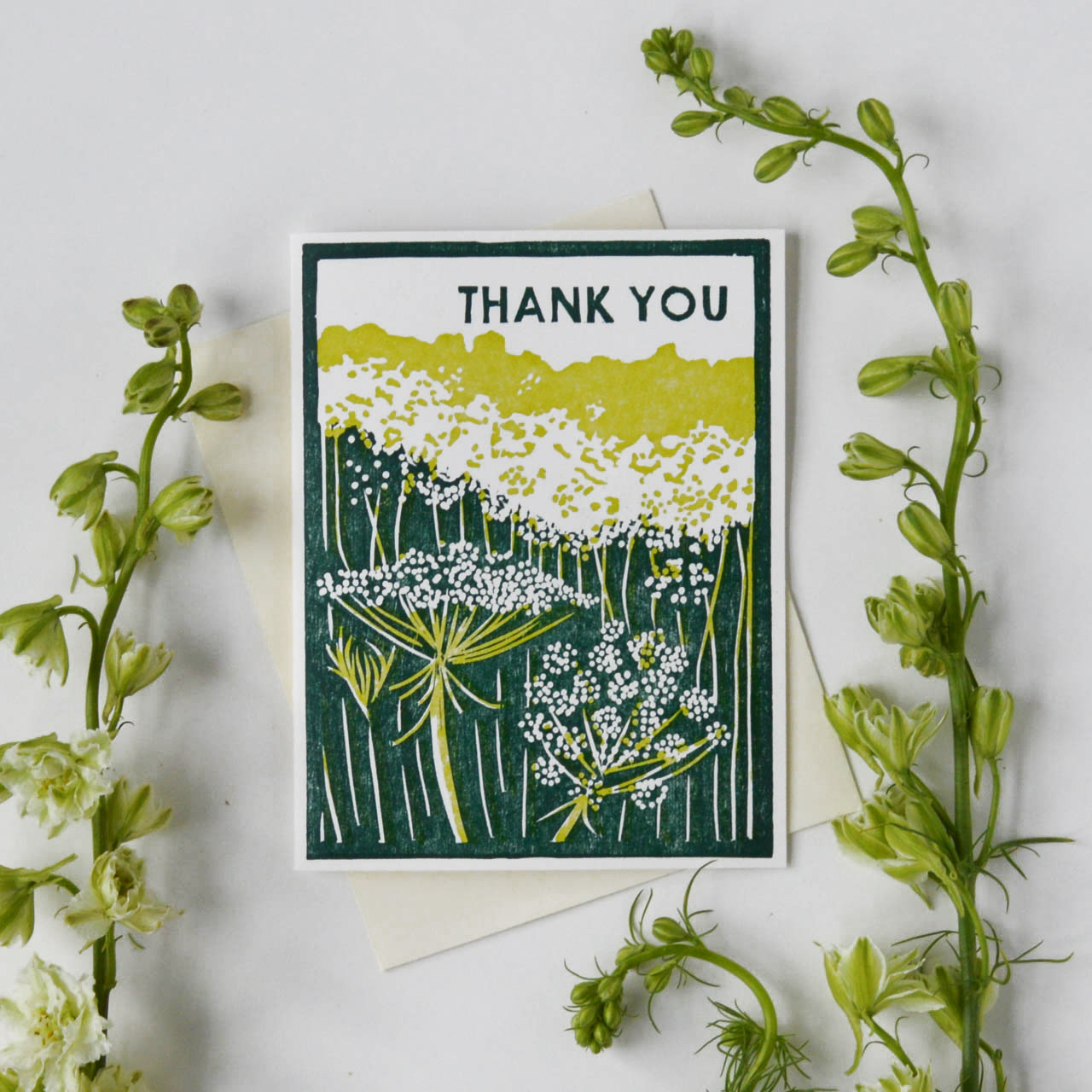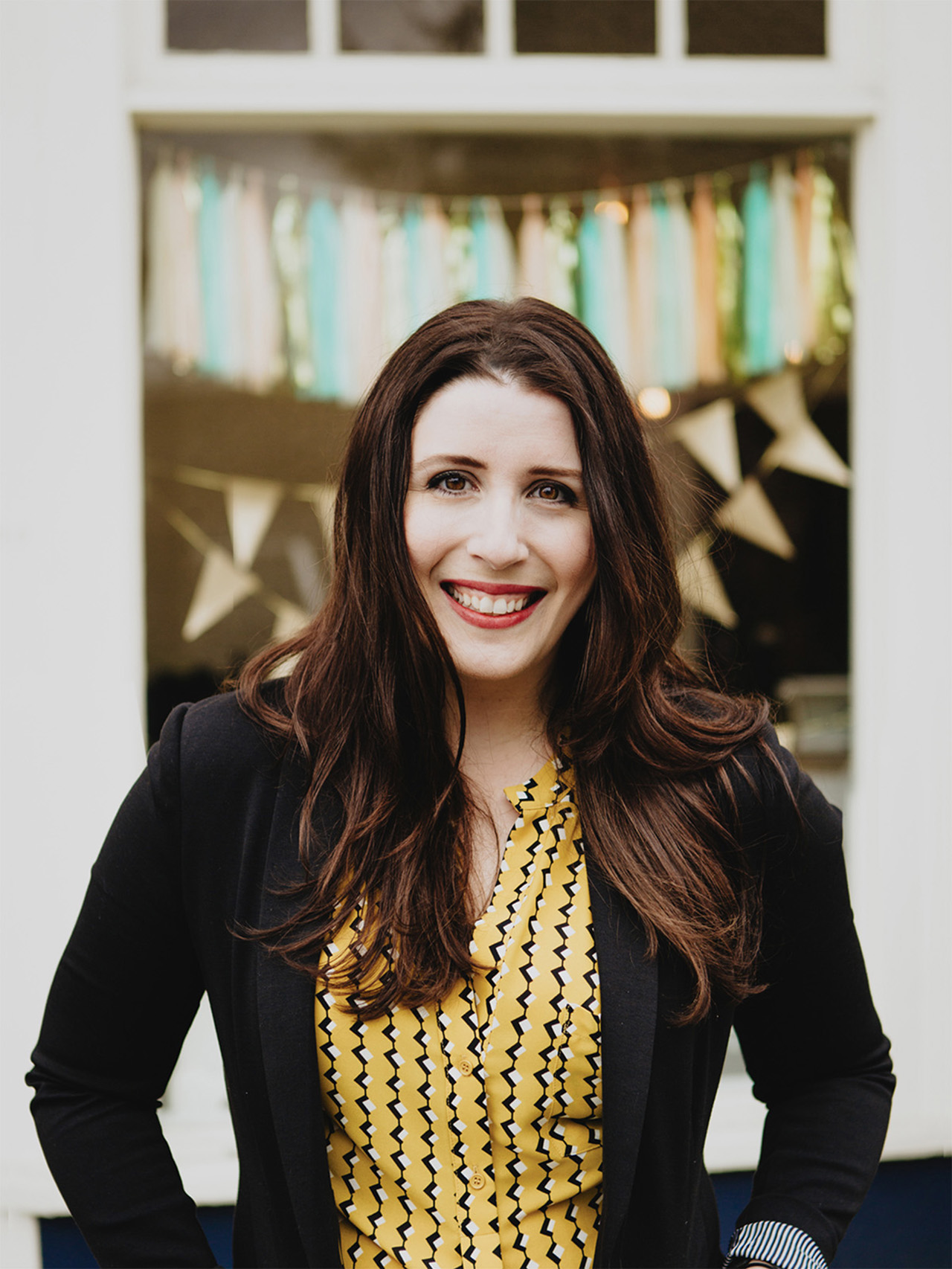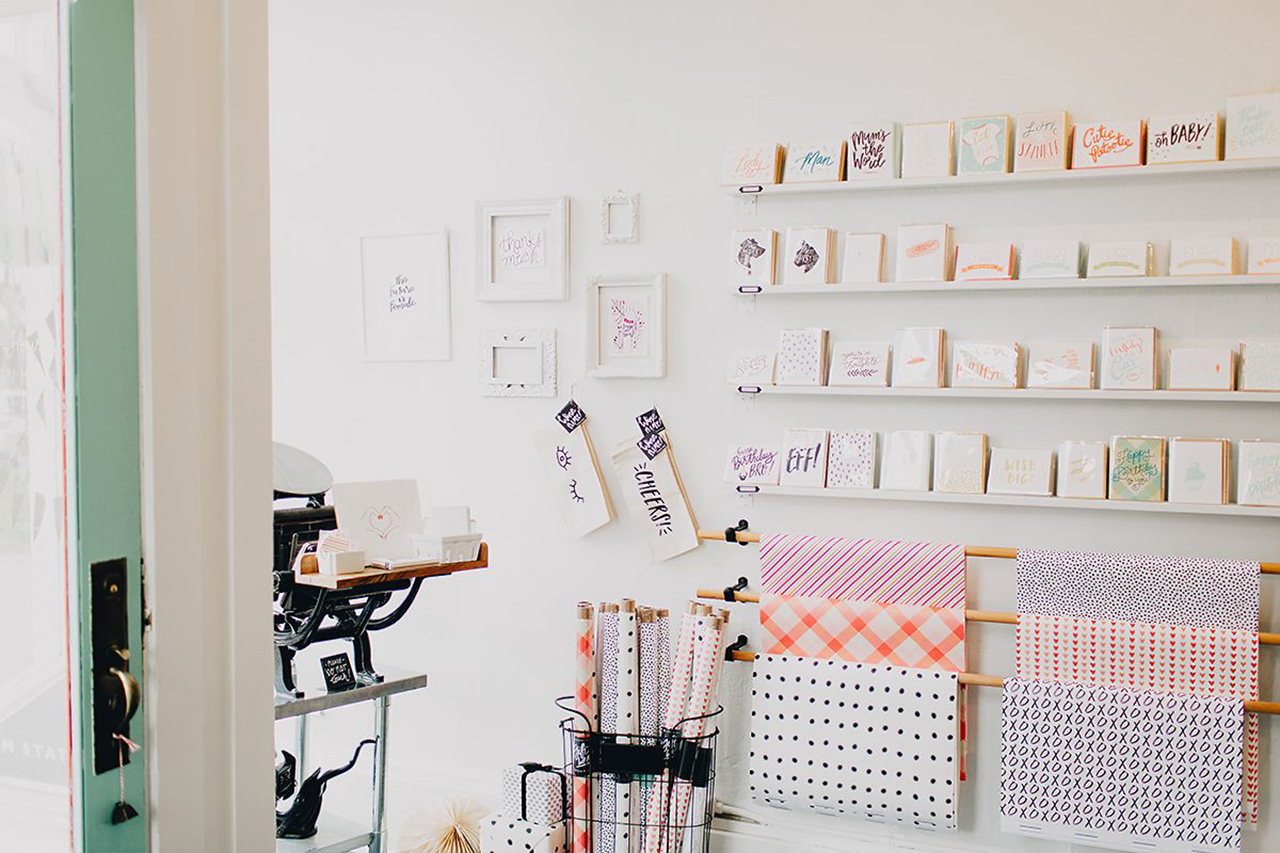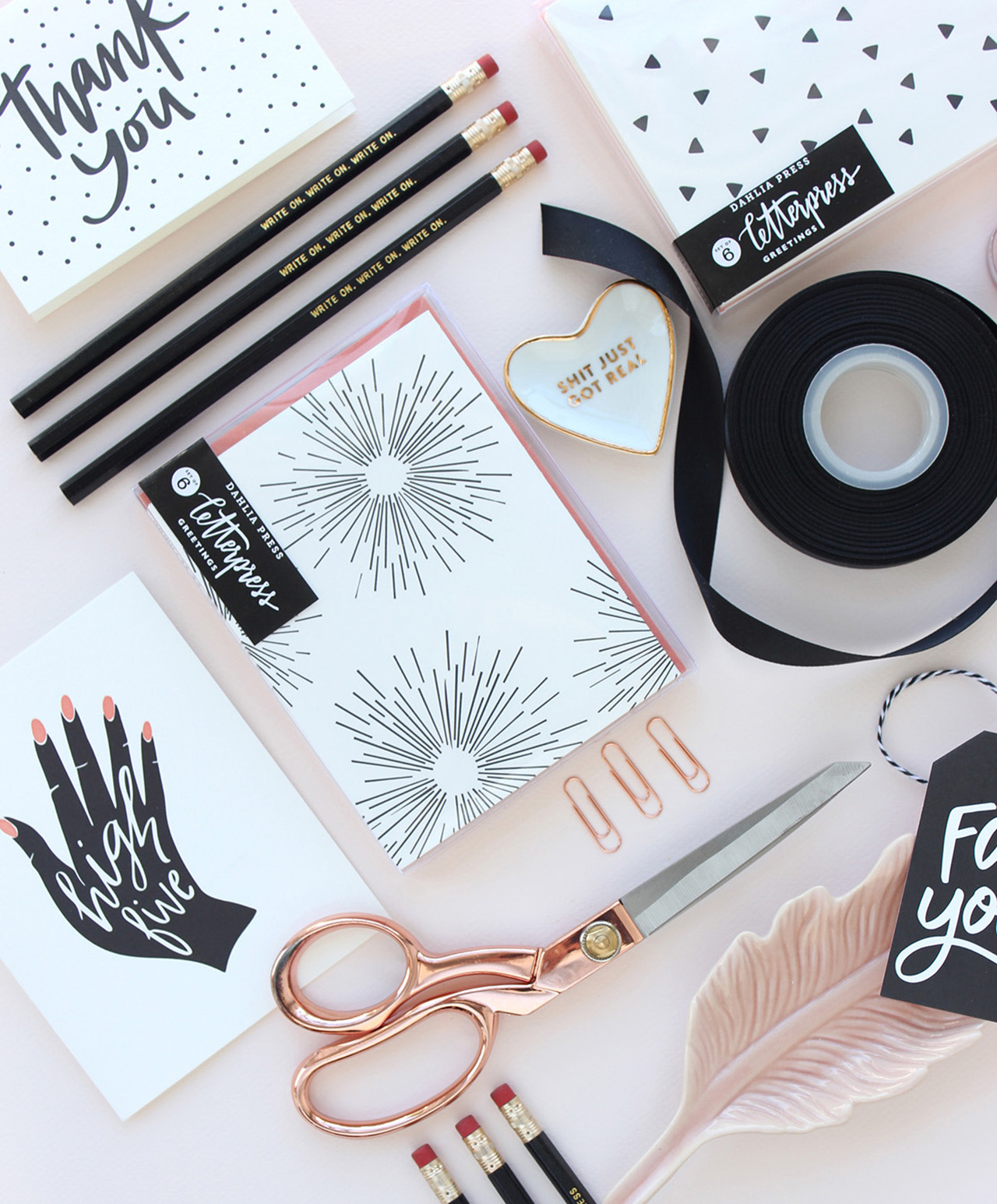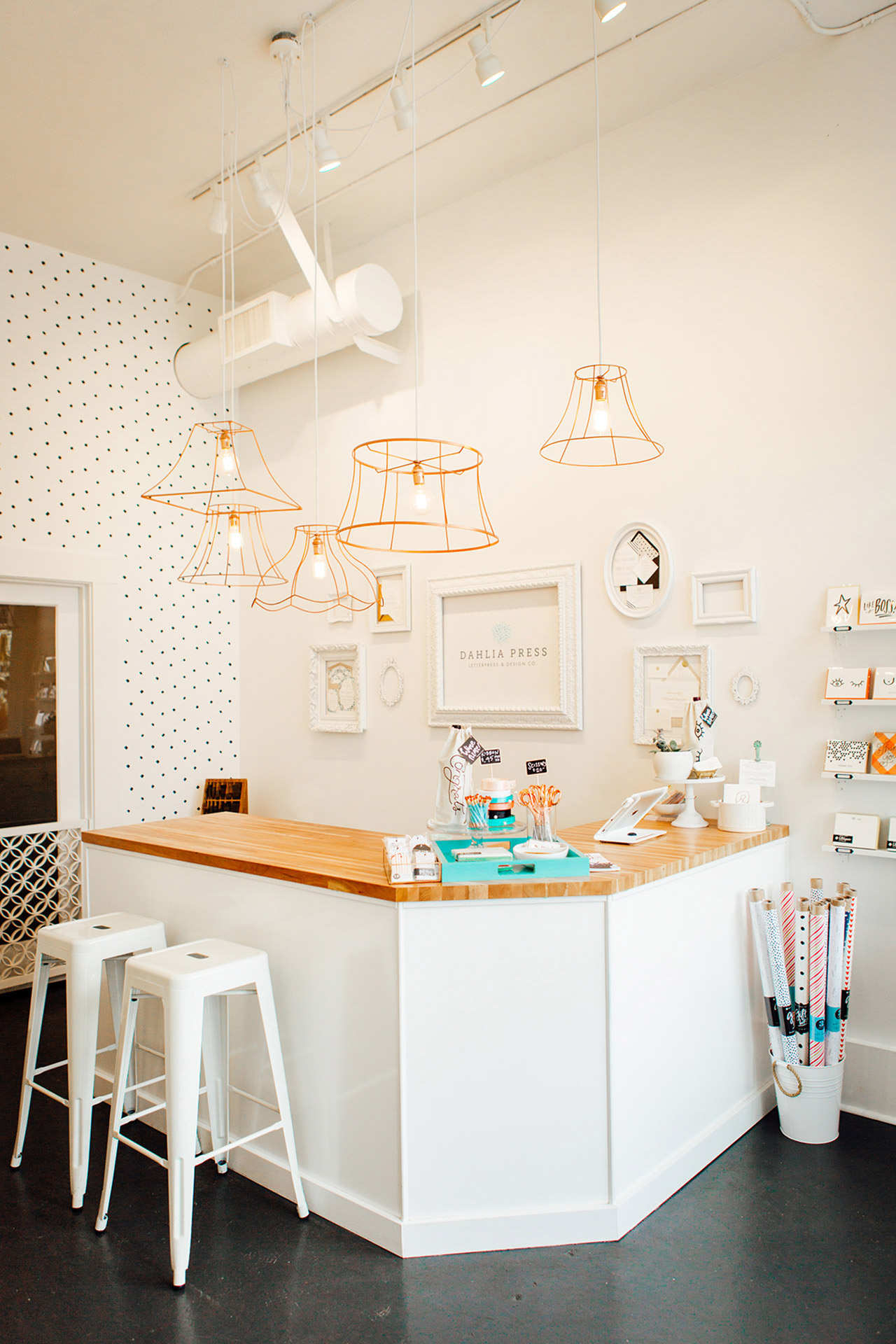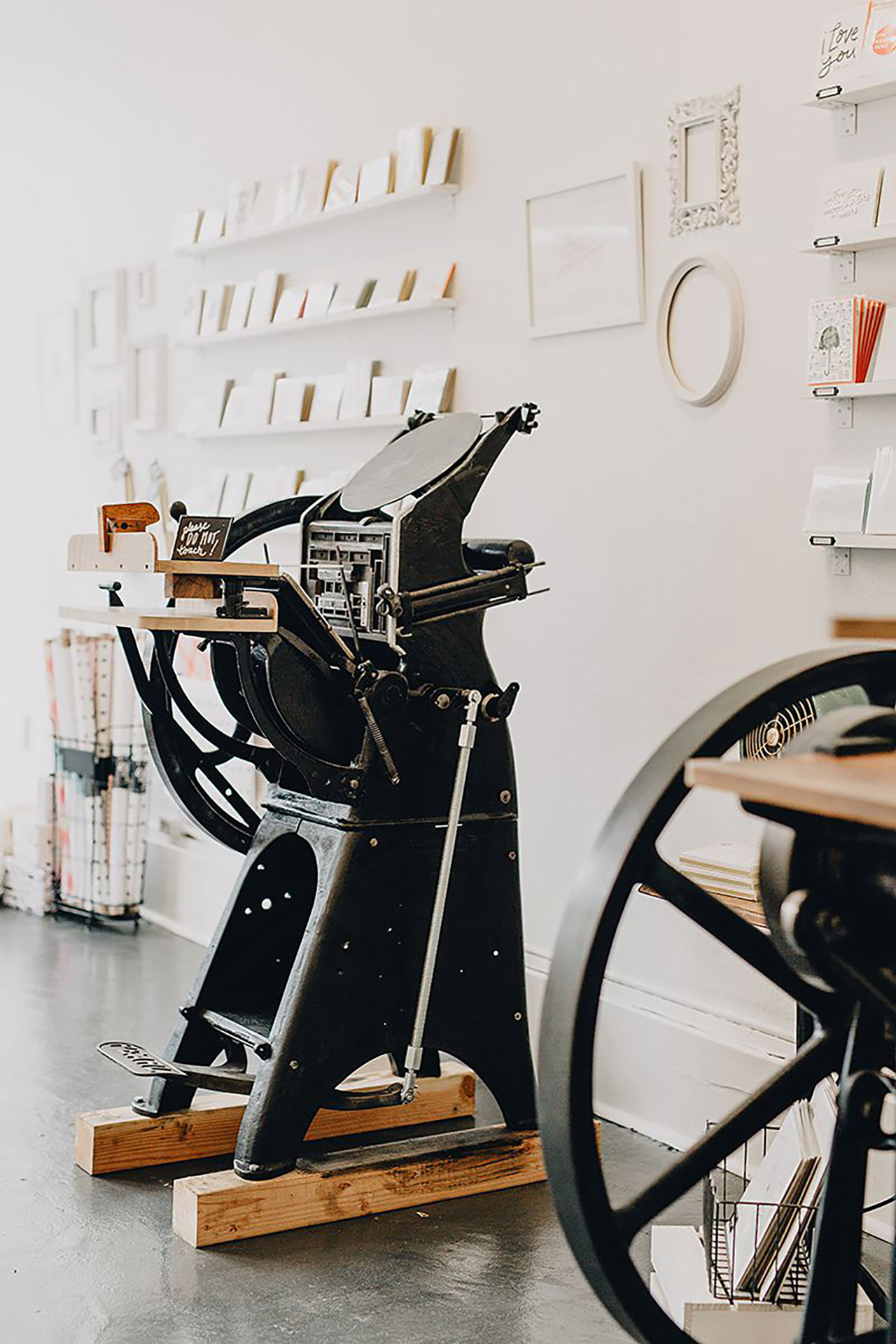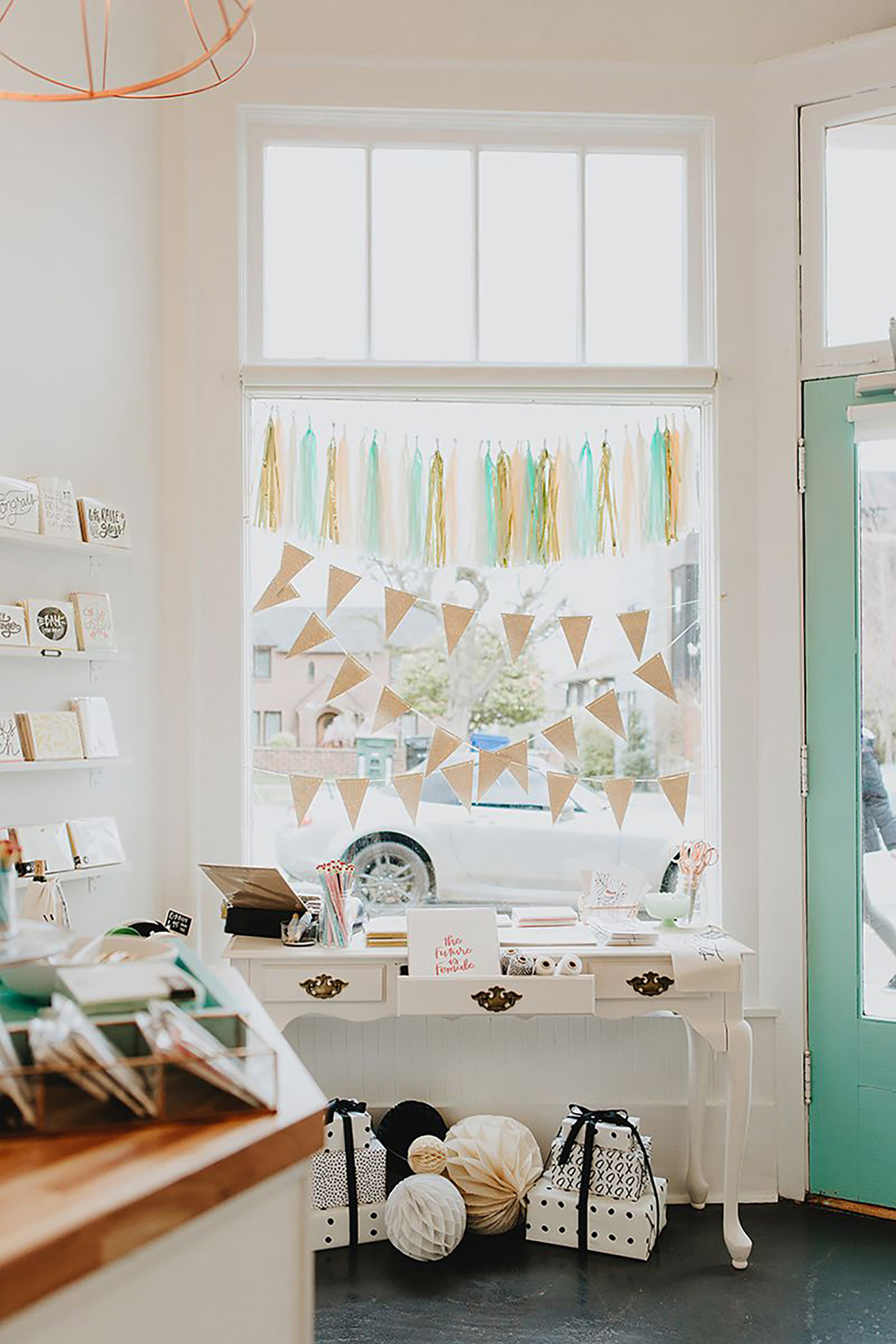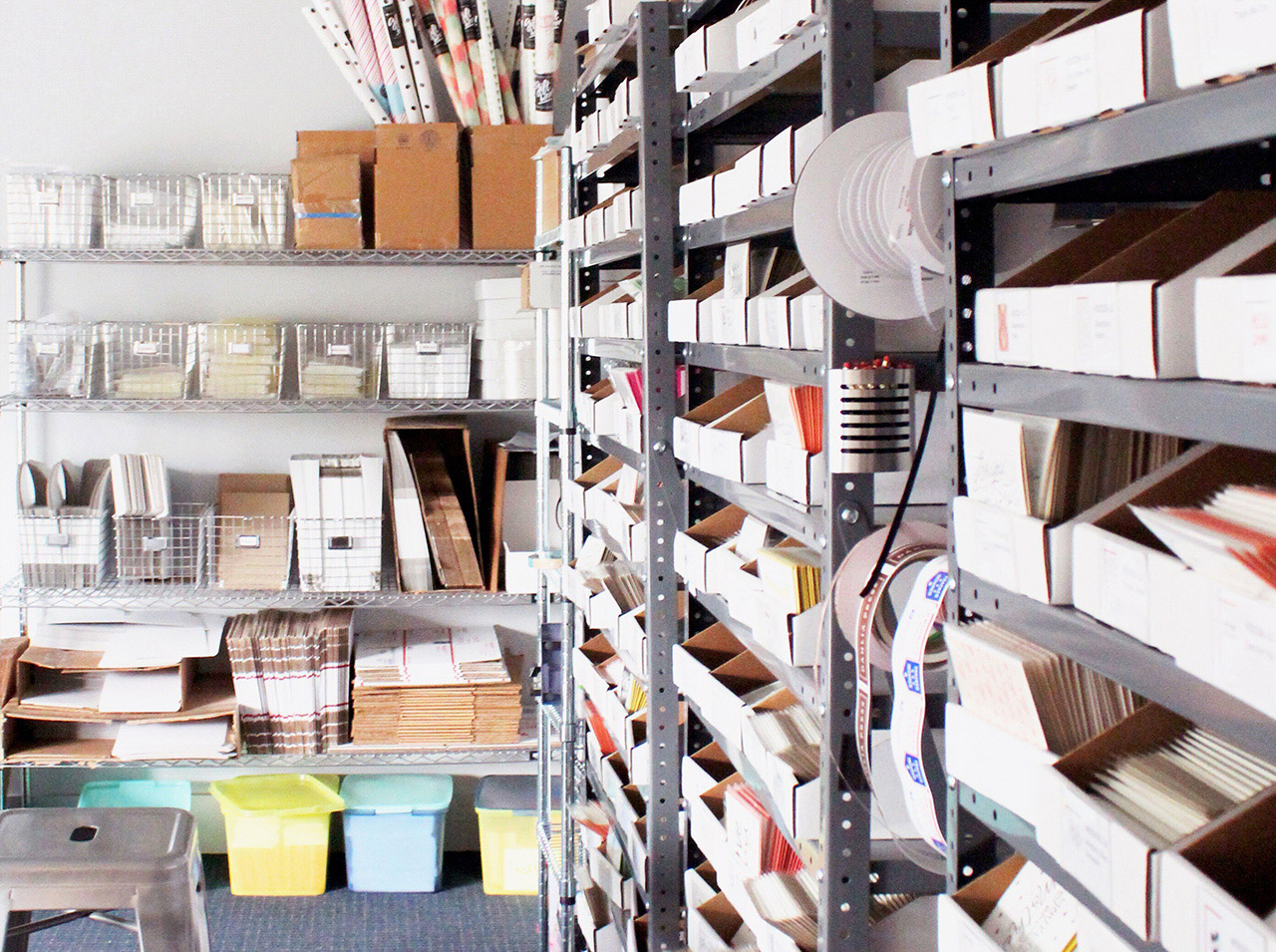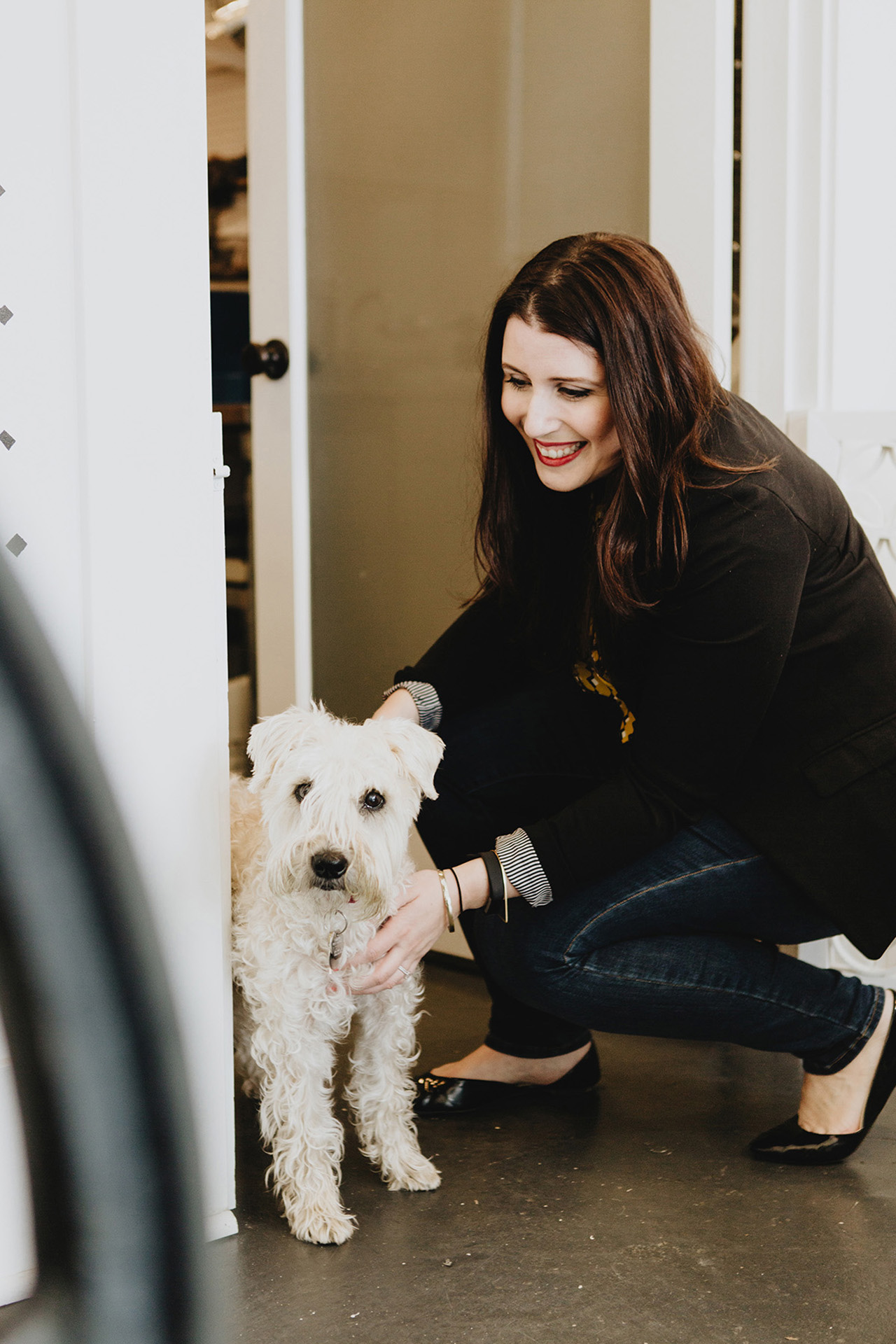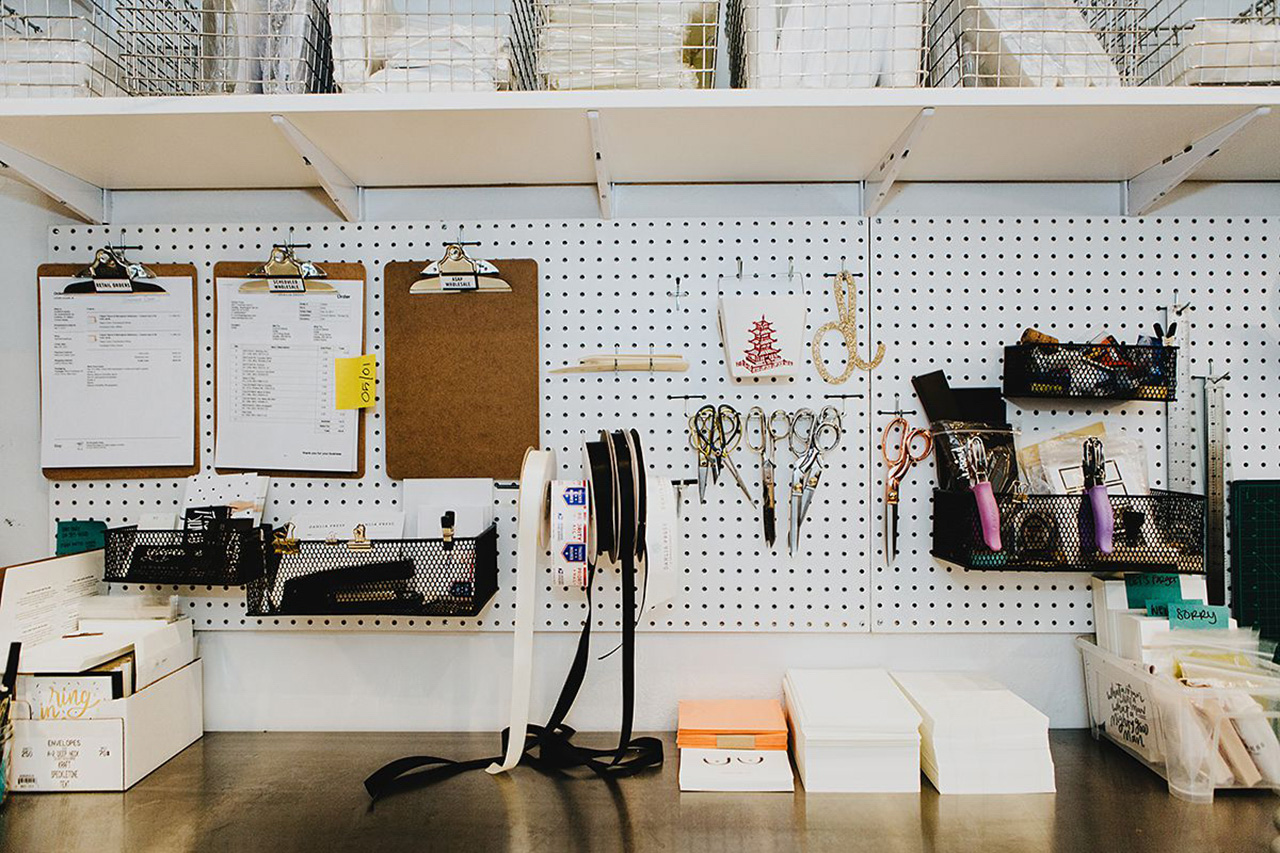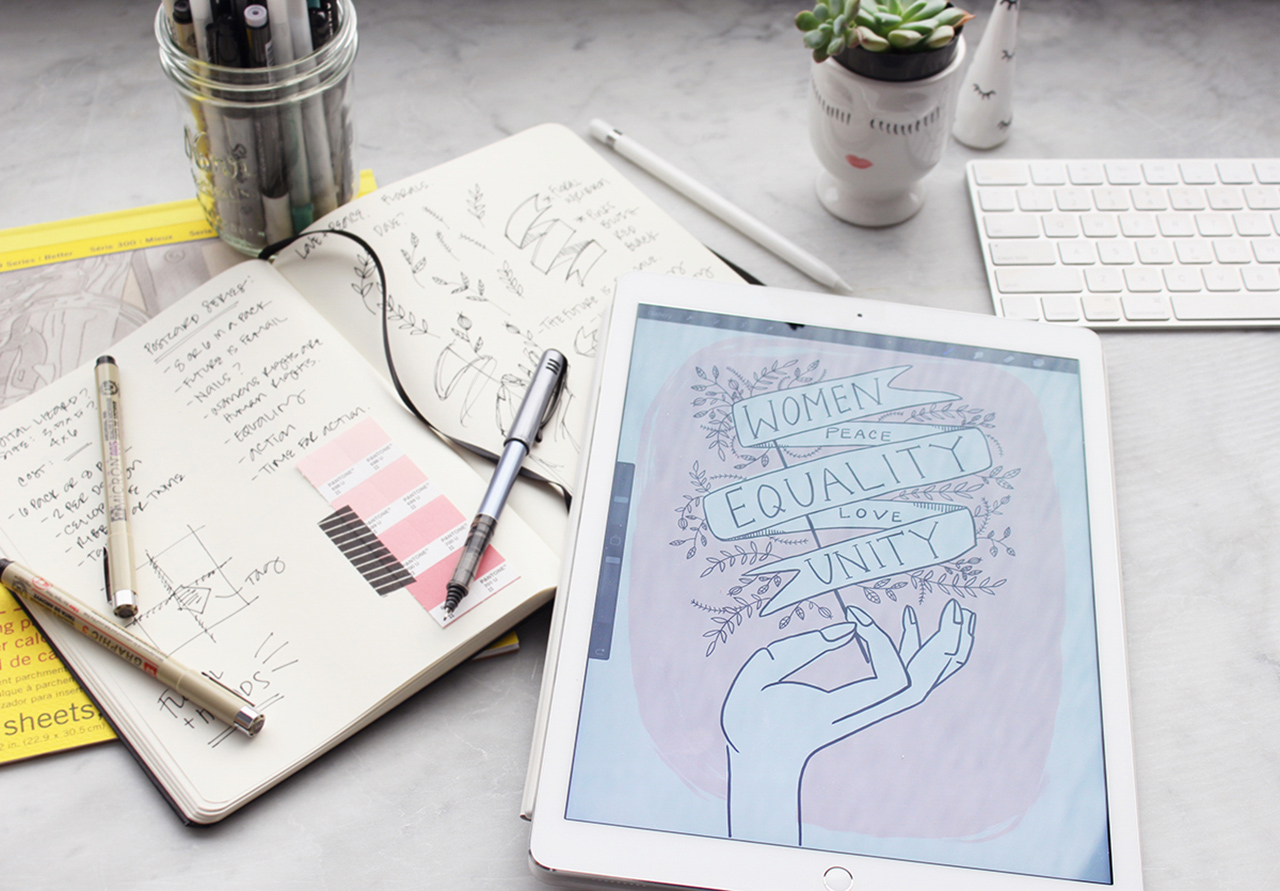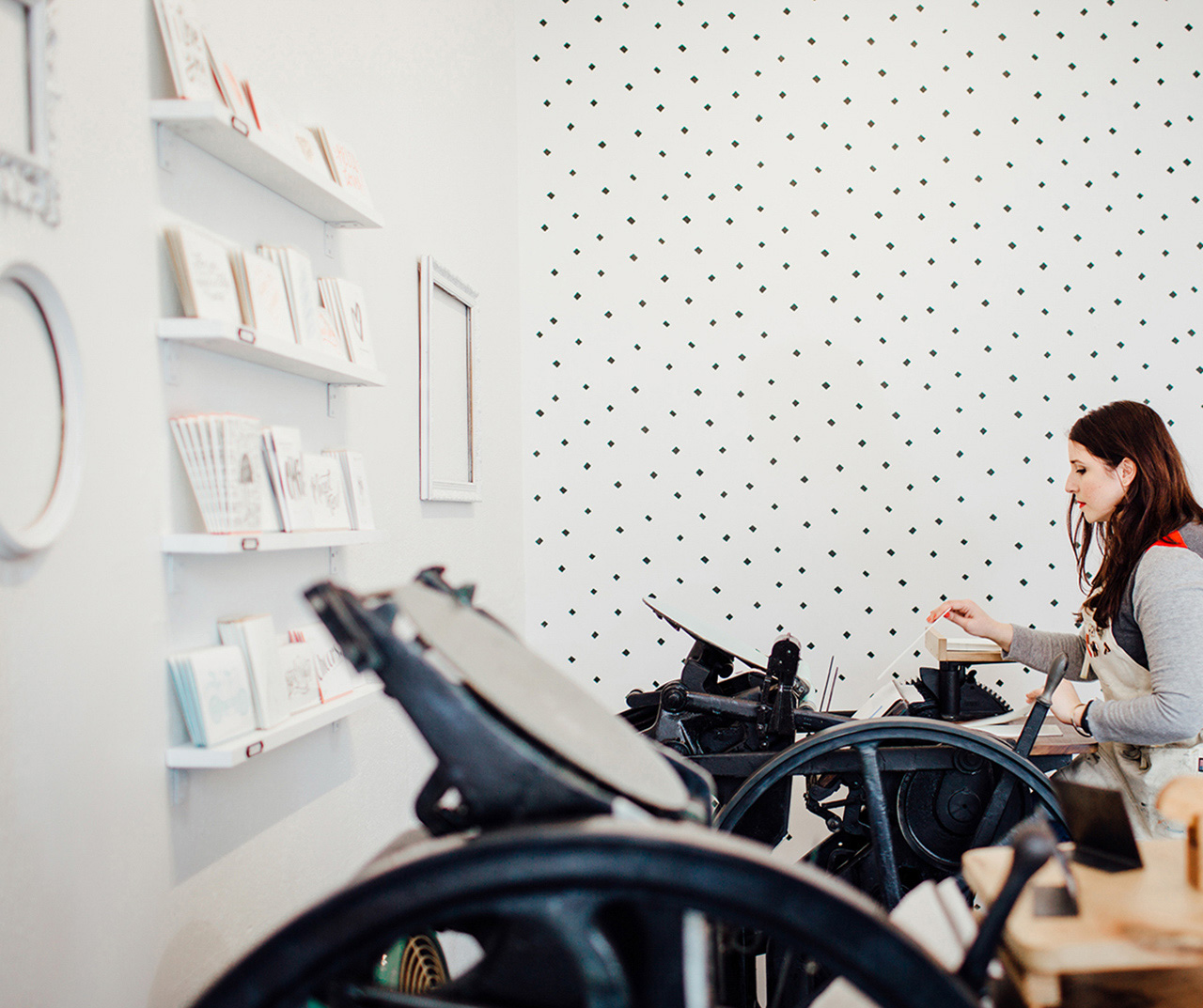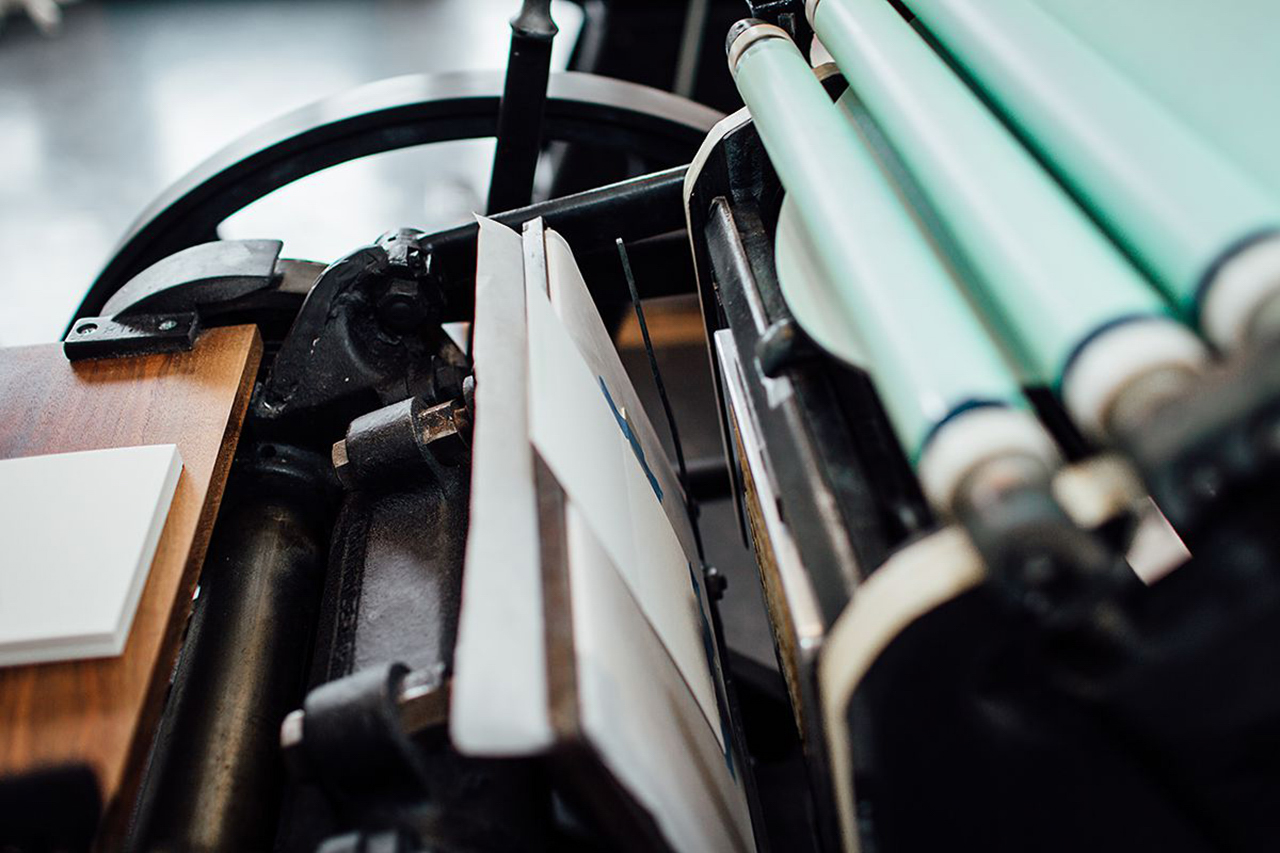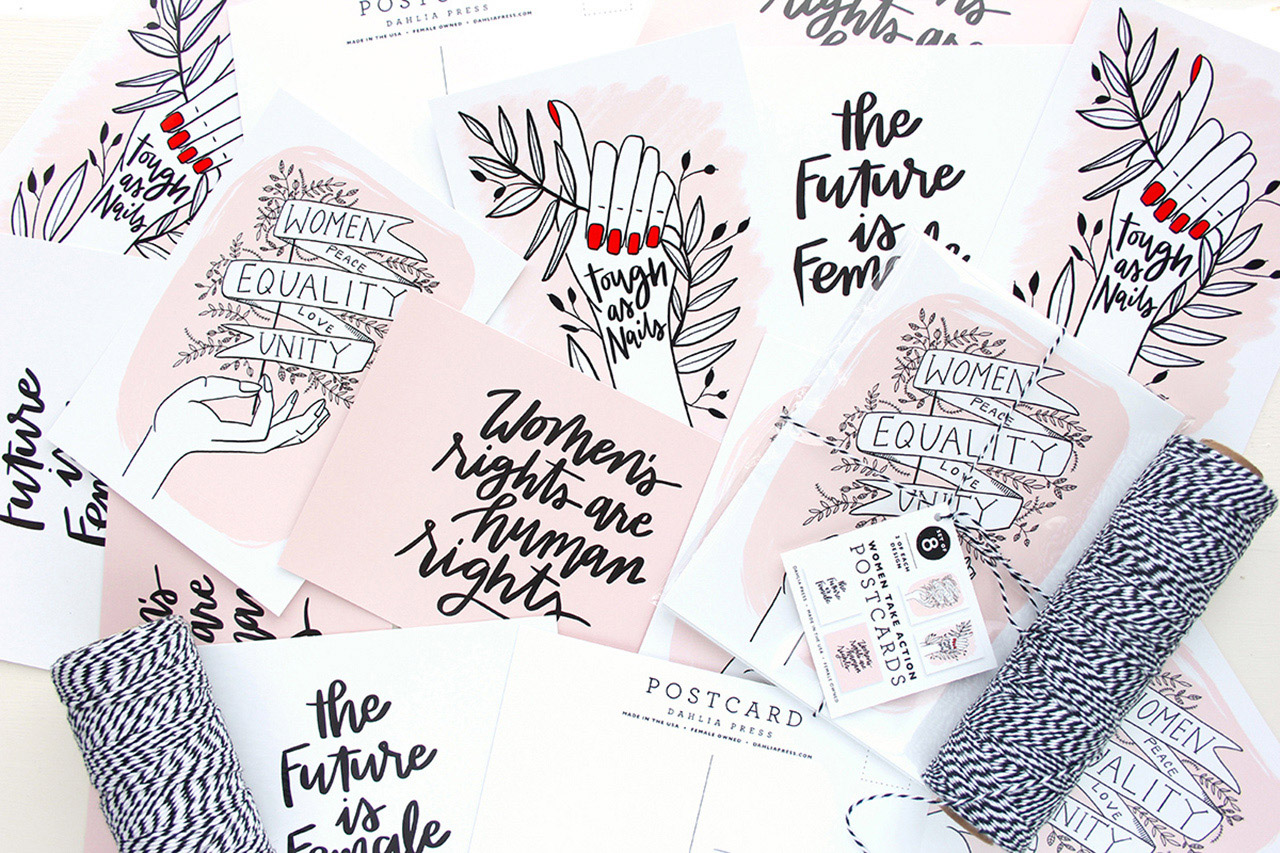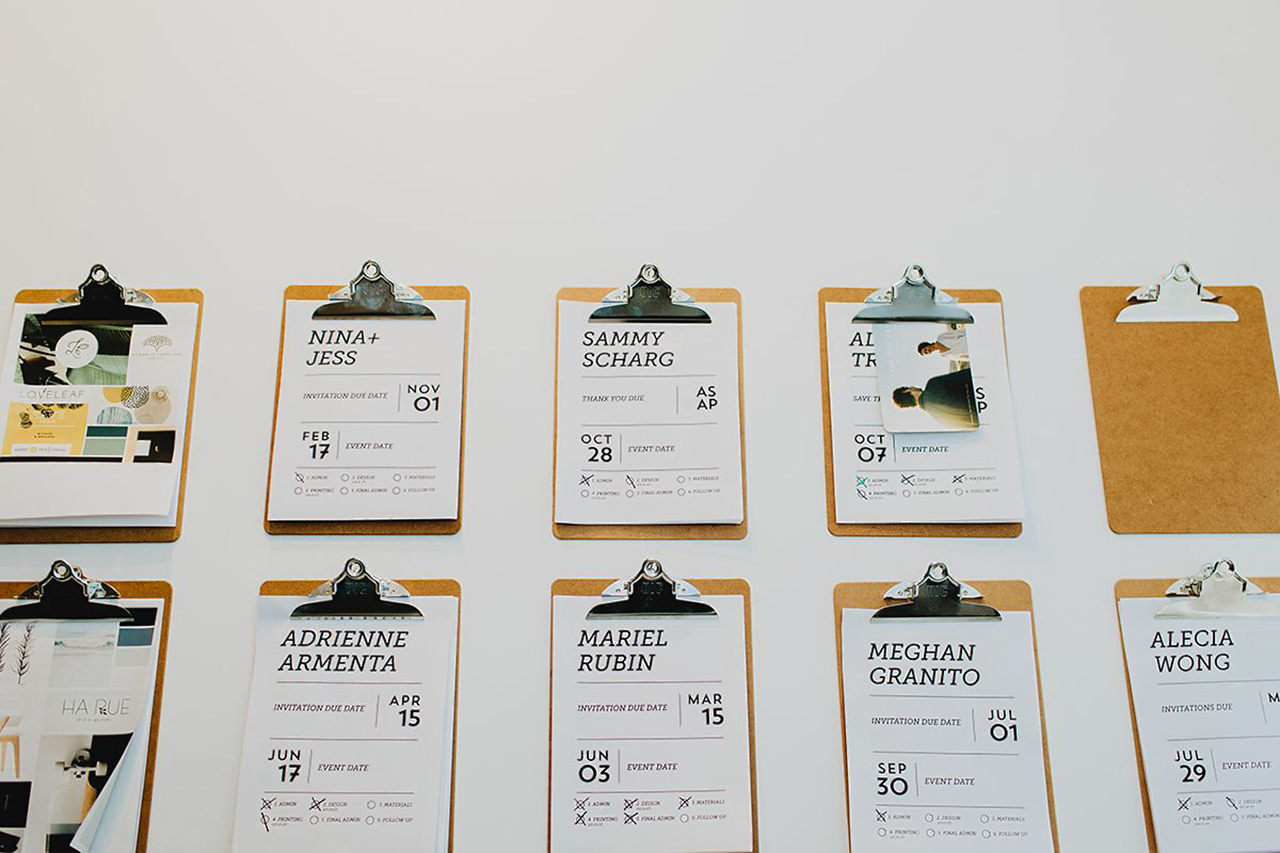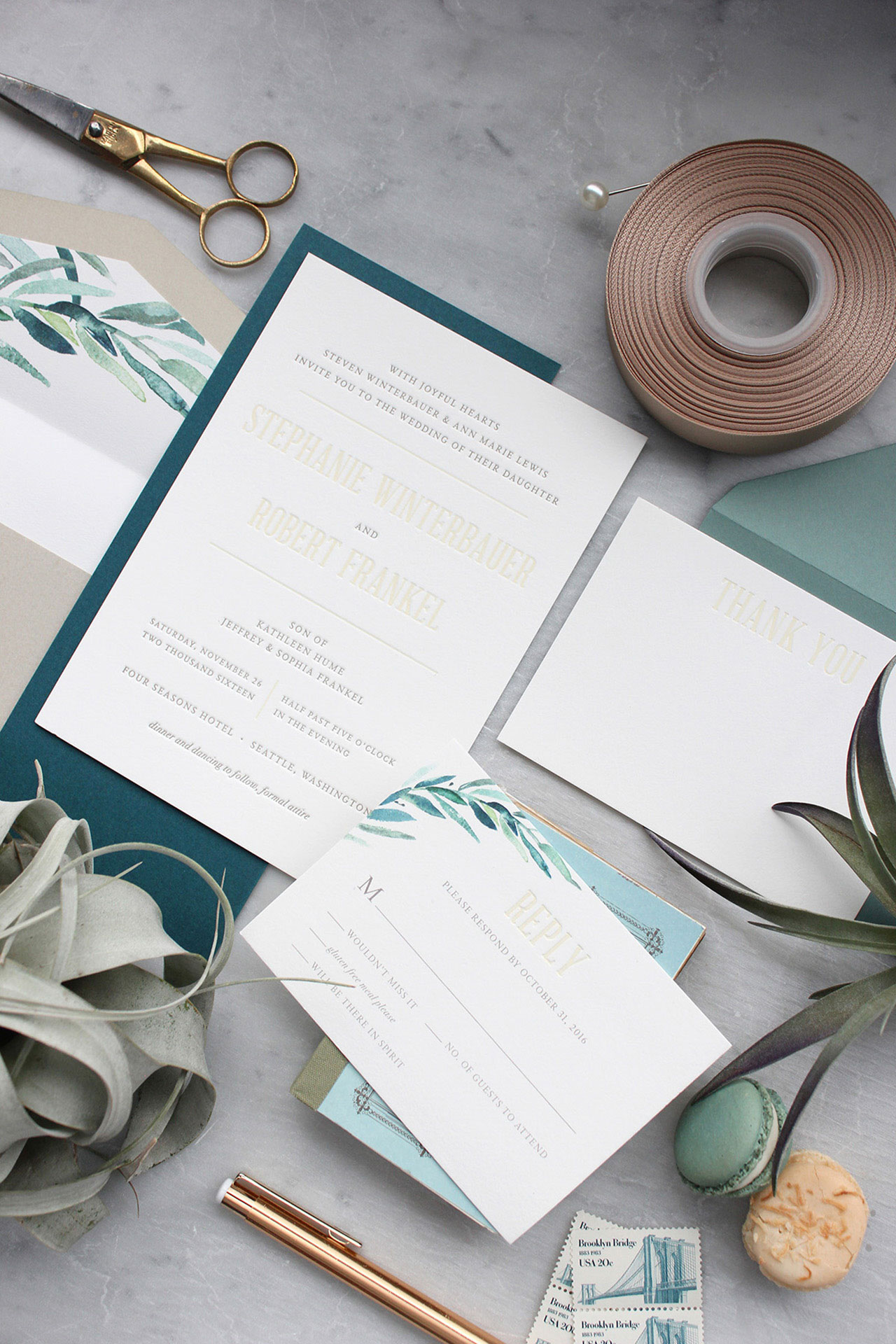Next up on Behind the Stationery is Liz from Lionheart Prints based in New Orleans! With a hybrid storefront and studio on Magazine Street, she manages her business, staff of 6, and creates all of the designs for Lionheart Prints. She’s here to share her story about how working a hodgepodge of jobs right after college brought her into the stationery world and open up about some of her struggles as a small business owner. Take it away, Liz! —Megan Soh
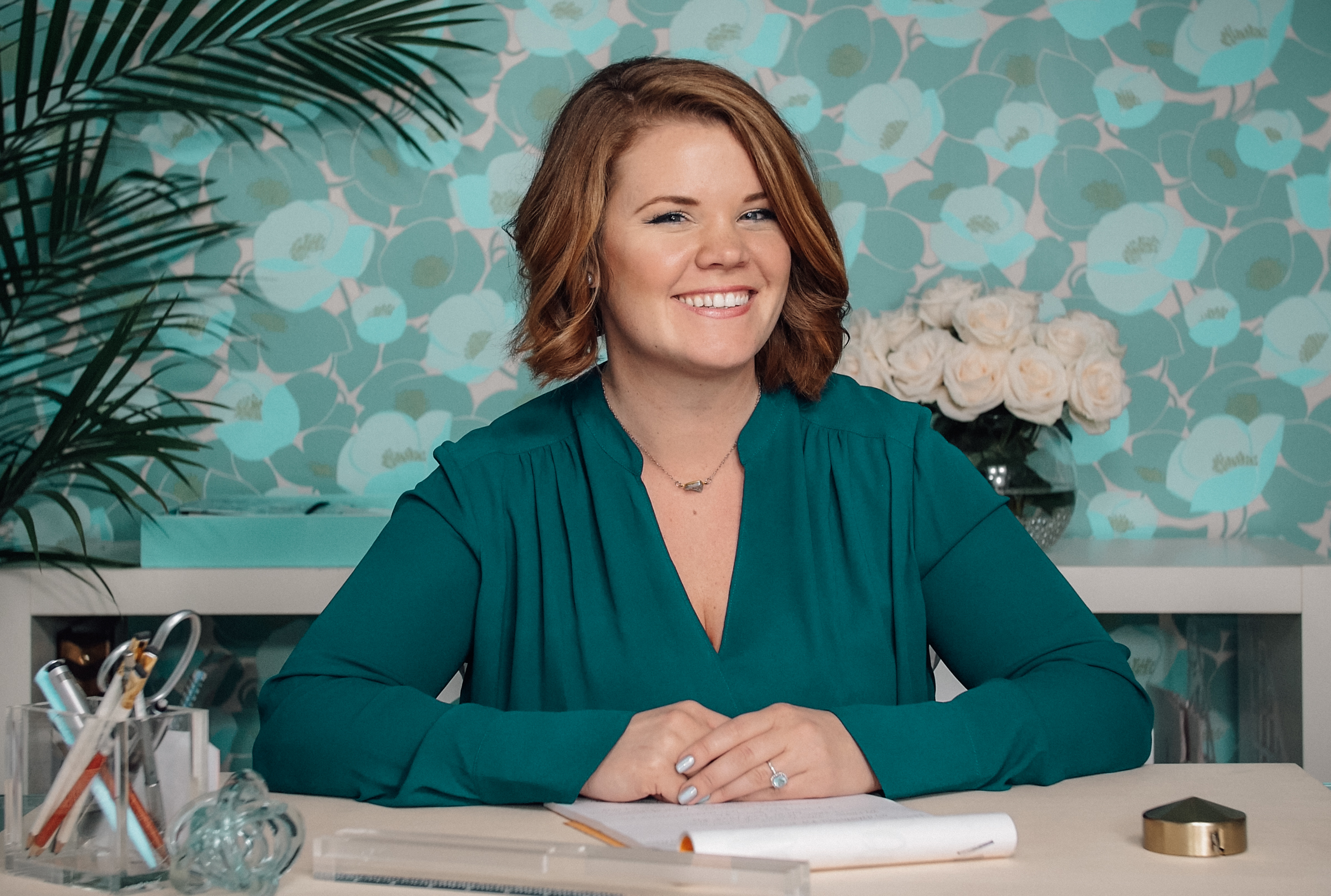
Photo by Oli Alexander of Gigsy.co
From Liz: I graduated college in 2008, during the height of the financial crisis. My dream was to find a job as a designer in a fancy ad agency, but there were no such positions available. Instead, I worked a lot of (what felt like) random part-time jobs, that ended up paving the way to starting my own business. One of them happened to be a job as a shopgirl at Paper Source in Houston. I loved everything about that job, from helping customers find the perfect gift, to guiding couples through the custom wedding invitation process – but especially restocking the card wall. Every time I would unpack a box of cards, I would turn over each one to read about the brand and how they were made. Realizing that these companies were small studios, often run out of their homes by one or two people getting to make beautiful, funny, tiny pieces of art for a living. I said to myself, “Yeah, that’s the job for me.”
A few years later, I moved to New Orleans and was still balancing the freelance design / part-time job hustle. I was exhausted — working at Pier One during the day, doing improv comedy at night, and squeezing in client work in between. One day I saw a listing for my dream job: a full-time position as retail manager and designer for a beautiful stationery shop on Magazine Street. I got the job and worked my tail off handling dozens of custom holiday cards, invitations, and whatnot, all while managing the retail shop. It was a lot, but I loved it. However, the owner of the store neglected to inform me that this would be her last holiday season, and I was merely hired to get her through the rush. She closed up shop in the beginning of January, and once again, I was out of a job.
Crestfallen, and refusing to get stuck in the same cycle again, I looked back at all the experience I had accumulated and decided that I was going to start my own line. The name Lionheart comes from that feeling; it’s about being brave and doing what you believe in. It’s been five years since I started the company and I’m so proud of what we’ve built it to be today. It started as a little dream, just a gut instinct, a side hustle. Now it’s bigger and better than I ever imagined – and we’re just getting started.
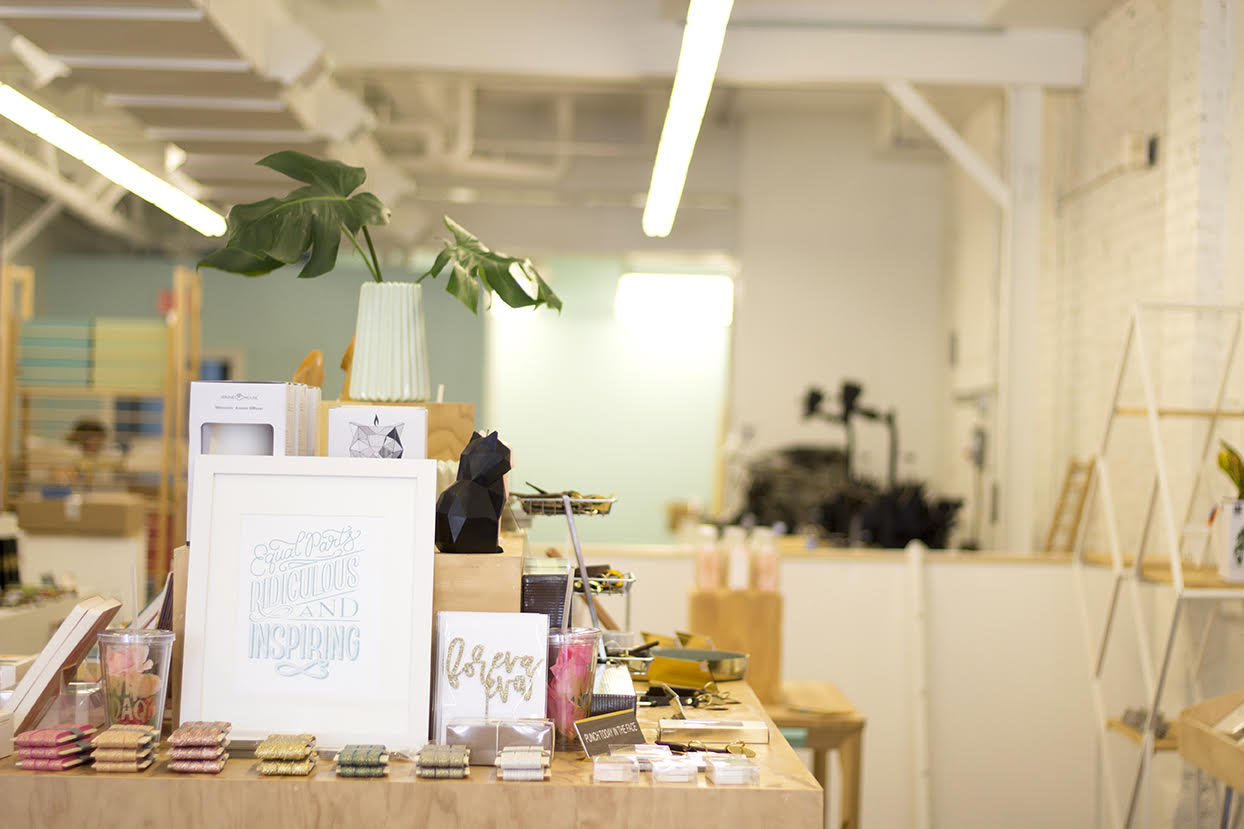
Our studio is located in the heart of Magazine Street, home of the best shopping in New Orleans. We print all our cards in house on two antique letterpress machines, which are visible from the retail floor. Our studio and shop is bright and happy, and we often hear customers say how much they enjoy being in the space, which always makes our day. The front half of the space is all retail, and the back half houses all of our inventory, production area and our office spaces. The space used to be a Buffalo Exchange (used clothing store) so we knocked out the walls where the dressing rooms used to be, and that’s where our offices are located now. In the very back, we have our retail backstock, a break room, and my favorite part – a photo studio! We can shoot products in house, and also use the space to record our podcast, Lionheart Living.
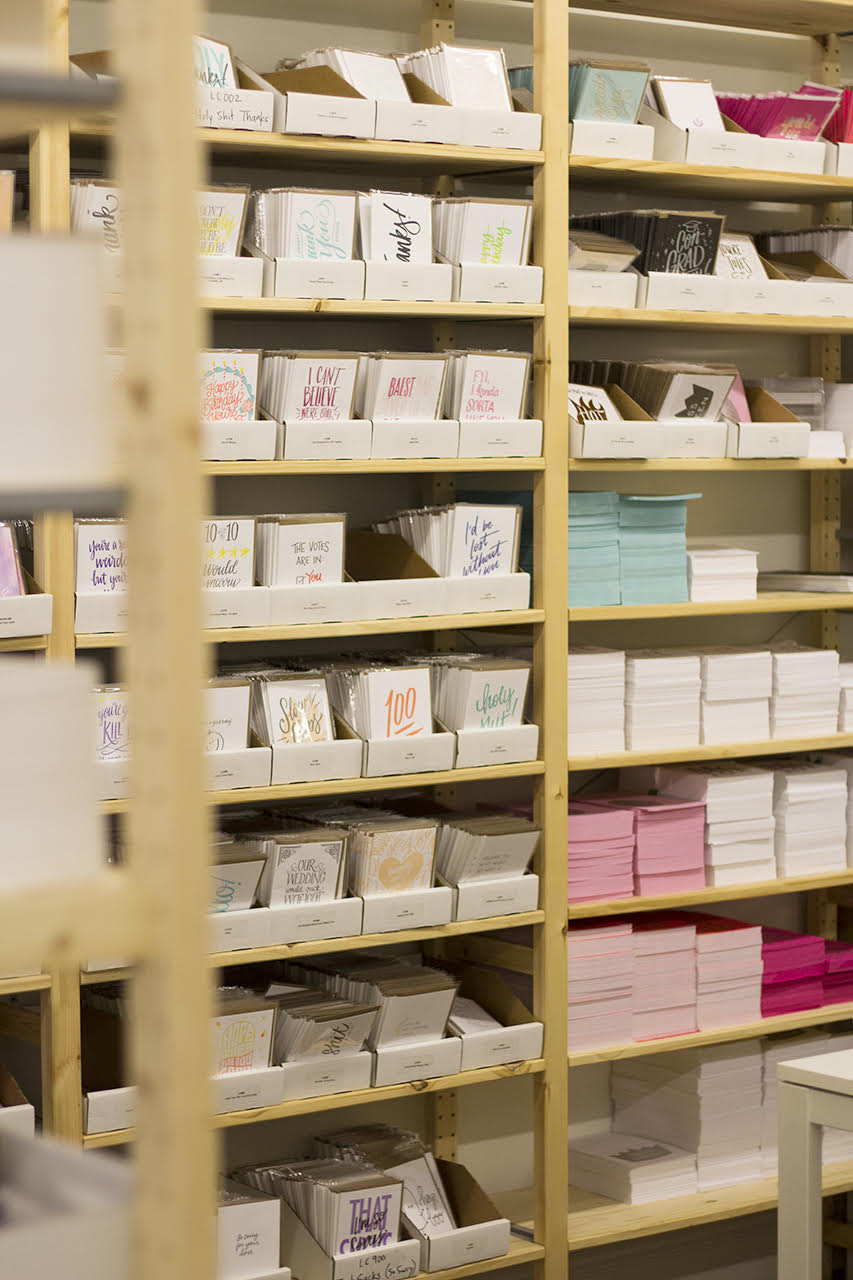
We specialize in hand-lettering and letterpress printing. We love the tactile feel of letterpress printing paired with the humanist touch of hand-lettering; I really think it brings our messages to life. Everything we make is rooted in positivity, so all the copy for our products is either funny or empowering, and in some cases, a little of both. I try to stay away from snark or self-deprecating humor, because I truly believe that the messages we give ourselves have the power to change our lives. I think that underlying philosophy really separates our brand from the crowd.
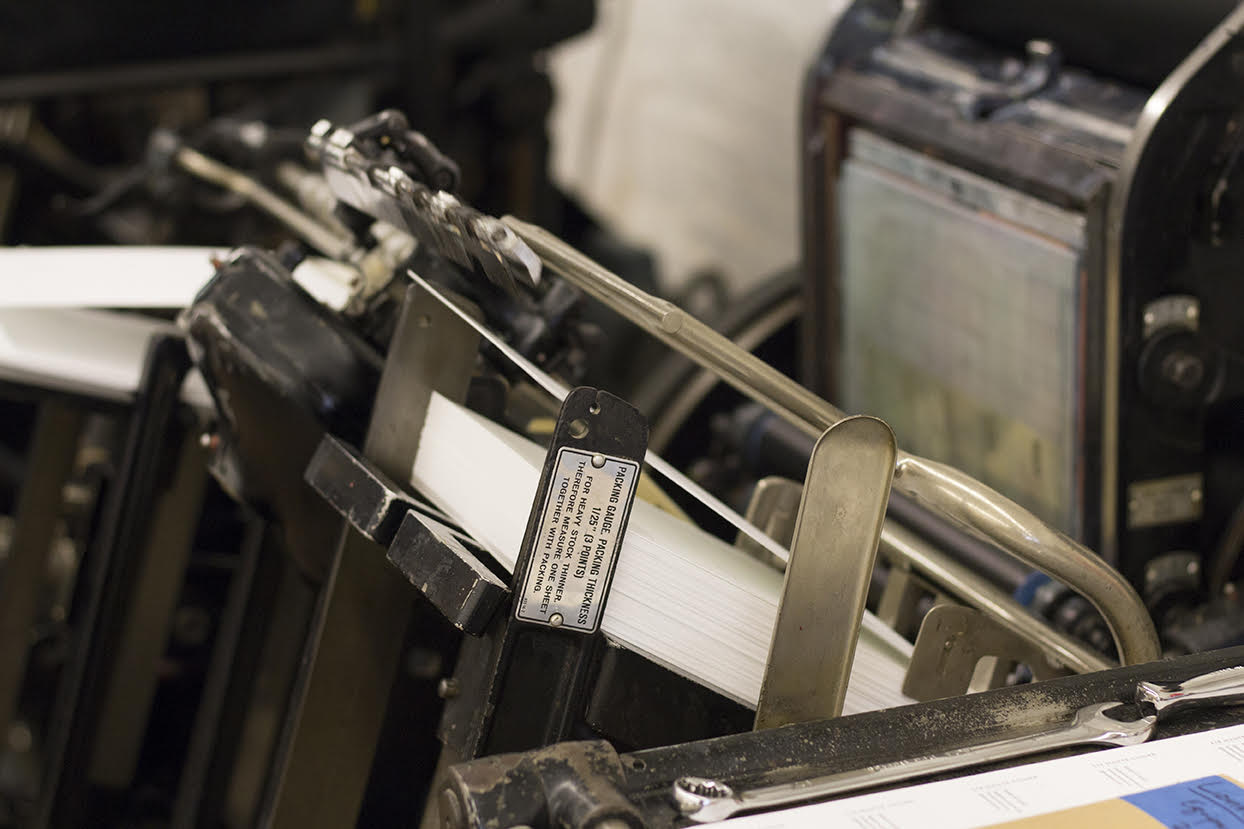
Since buying our own presses, we are cutting all of our digitally printed cards from our line. It’s really satisfying as we re-release cards in their new letterpress printed versions because it makes our whole line so much more cohesive in terms of color and style.
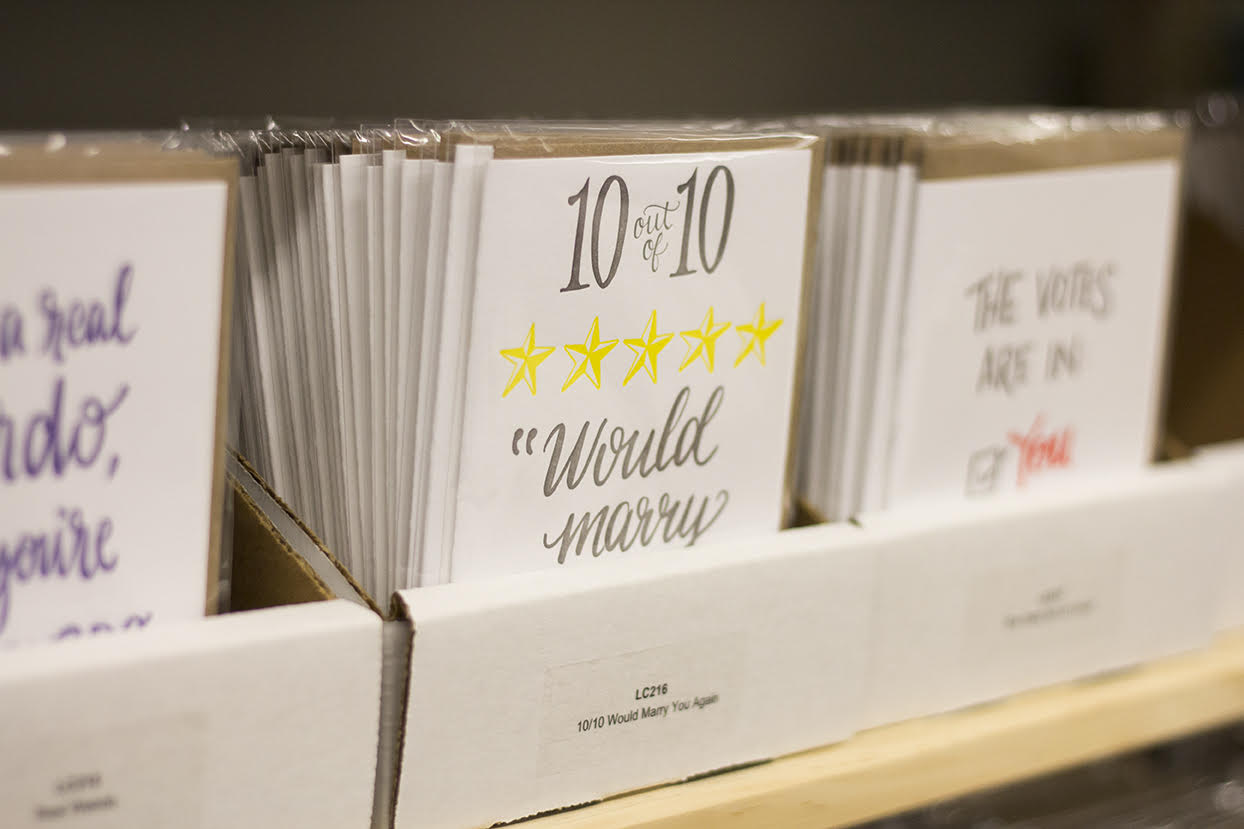
Typical work day? What even is that?! What I probably love most about my job is how unpredictable each day is. It keeps things exciting! I work in the shop almost every day except for Tuesday and Wednesday which are my “off” days, but really I’m still working, just usually from my home studio where I create the artwork for our line. I get up around 6:30-7:00AM, take care of things around the house, get some exercise, then head to work about 10:30AM. The store opens at 10ish (we have a great store hours sign, which is always a hit on Instagram), but Lauren, our wholesale manager goes in early around 9am to get started on work before the store opens. Ross is our press operator and works regular store hours from 10AM-6PM. We have several retail sales associates who are mostly college students and work in the front of house in shifts of 10AM-2PM and 2-6PM. Between the six of them, we are almost always able to have someone helping customers at the front. Whenever we don’t, I get to play shopgirl – it’s always fun getting to connect with our customers. Magazine Street is a heavy foot traffic area, so the shop stays pretty busy most days.
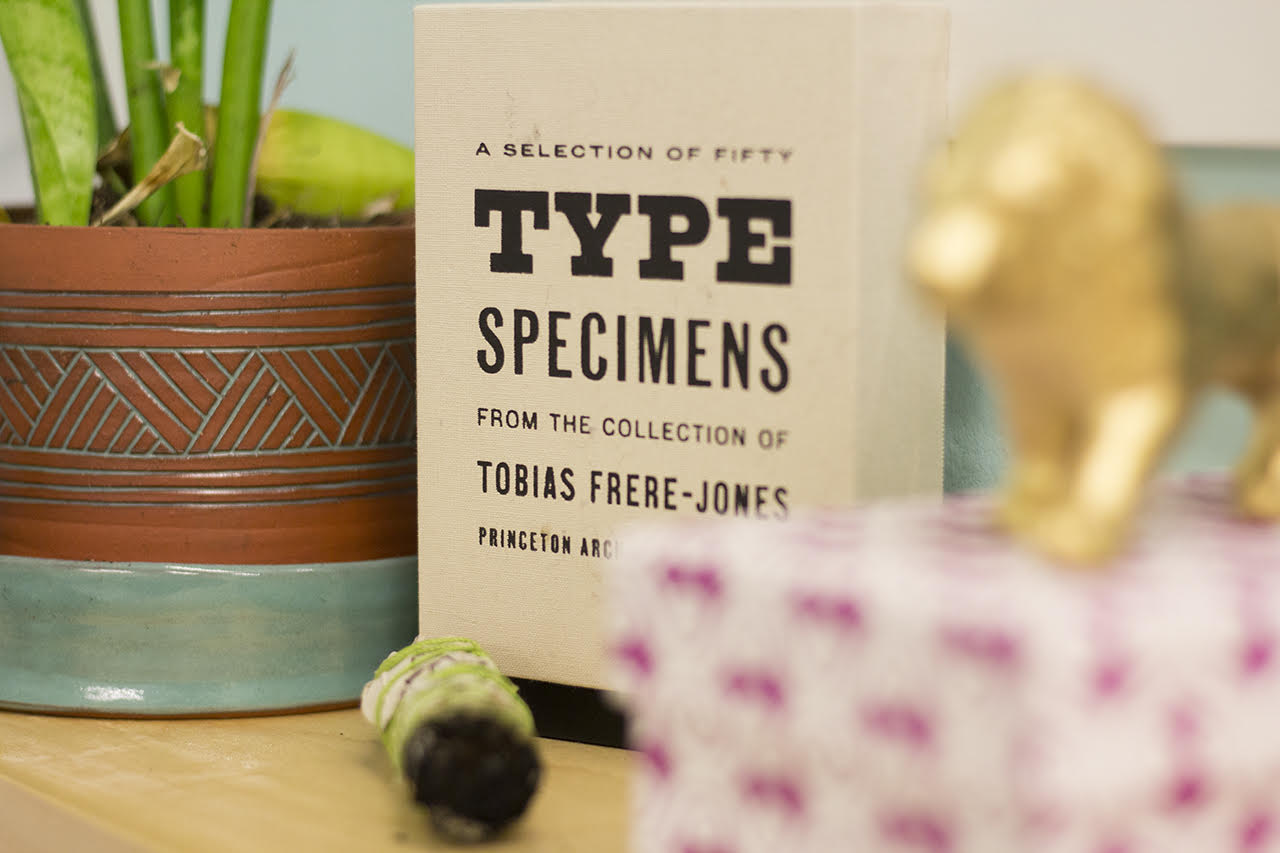
All of our designs are hand lettered, which means that I don’t use fonts to create our designs (which sometimes I resent not just being able to type good ideas and call it a day, haha!).
Everything starts as an idea, inspired by real life situations and people. When something happens or I say something that I think has potential, I add it to my running notes list of ideas in my phone. It’s about a mile long. When getting ready to design a new collection or group of cards, I’ll sit down with our amazingly funny and creative team to read off what ideas I’ve accumulated since the last release. It’s a good chance to spitball with them and see what actually works, and also figure out what doesn’t make as much sense. Sometimes they aren’t totally on board with an idea, but if I really believe in it, at the end of the day, it’s my risk to take.

Once we get a good tailored list of ideas we want to focus on, I’ll go spend my studio days over the next few weeks bringing the concepts to life. I try to make words look they way they feel. Through typography, colors, shapes and lines, I treat hand-lettering like the costume words wear to get the idea across.
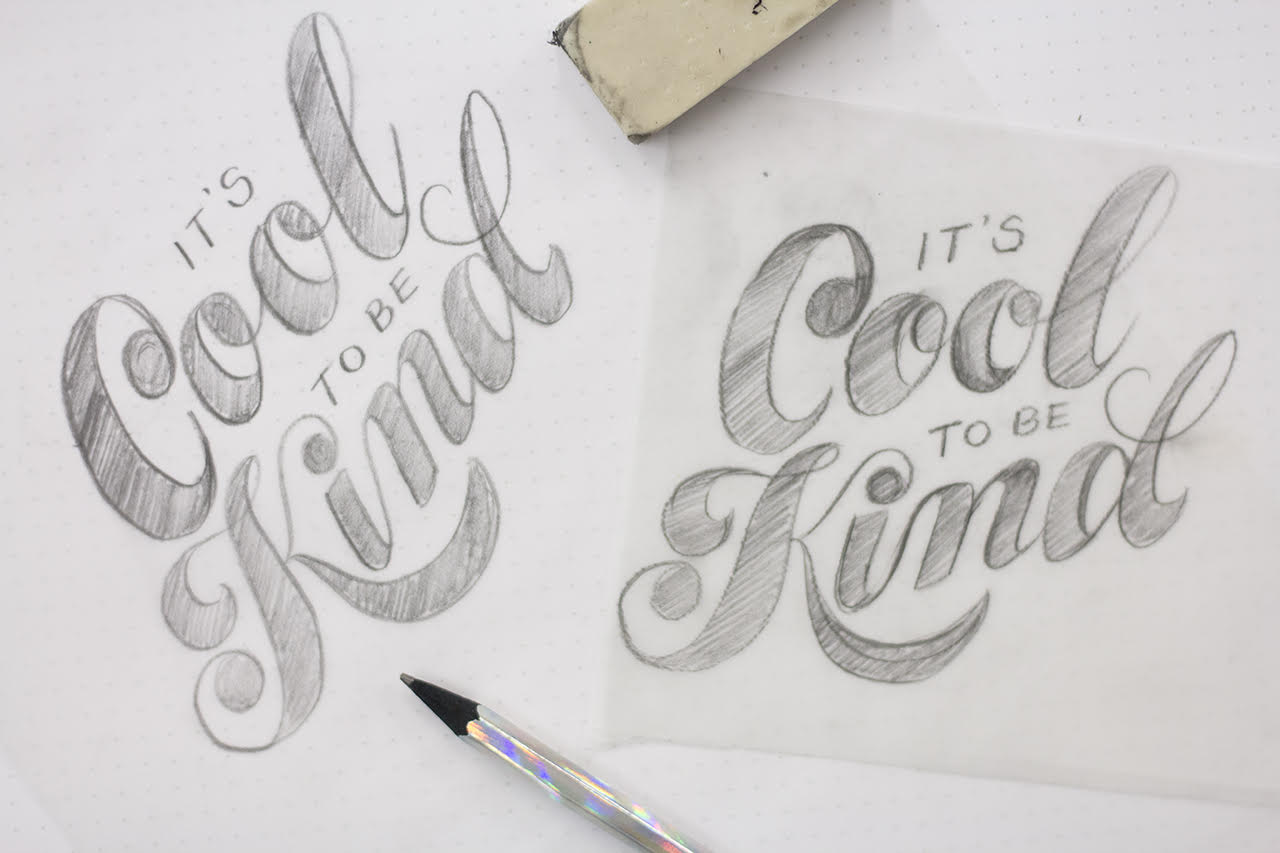
First, I’ll start with a pencil sketch (more like several, if it’s a more intricate design). Once I like the way the text looks and feels, I’ll scan it or take a photo on my phone or iPad (depending on the complexity and detail), and I’ll either draw over it in ProCreate on my iPad Pro, or I’ll plot the points in Illustrator. The goal at this point is just to get the design in black and white, so we can send the file off to be made into a letterpress plate or die for foil stamping.
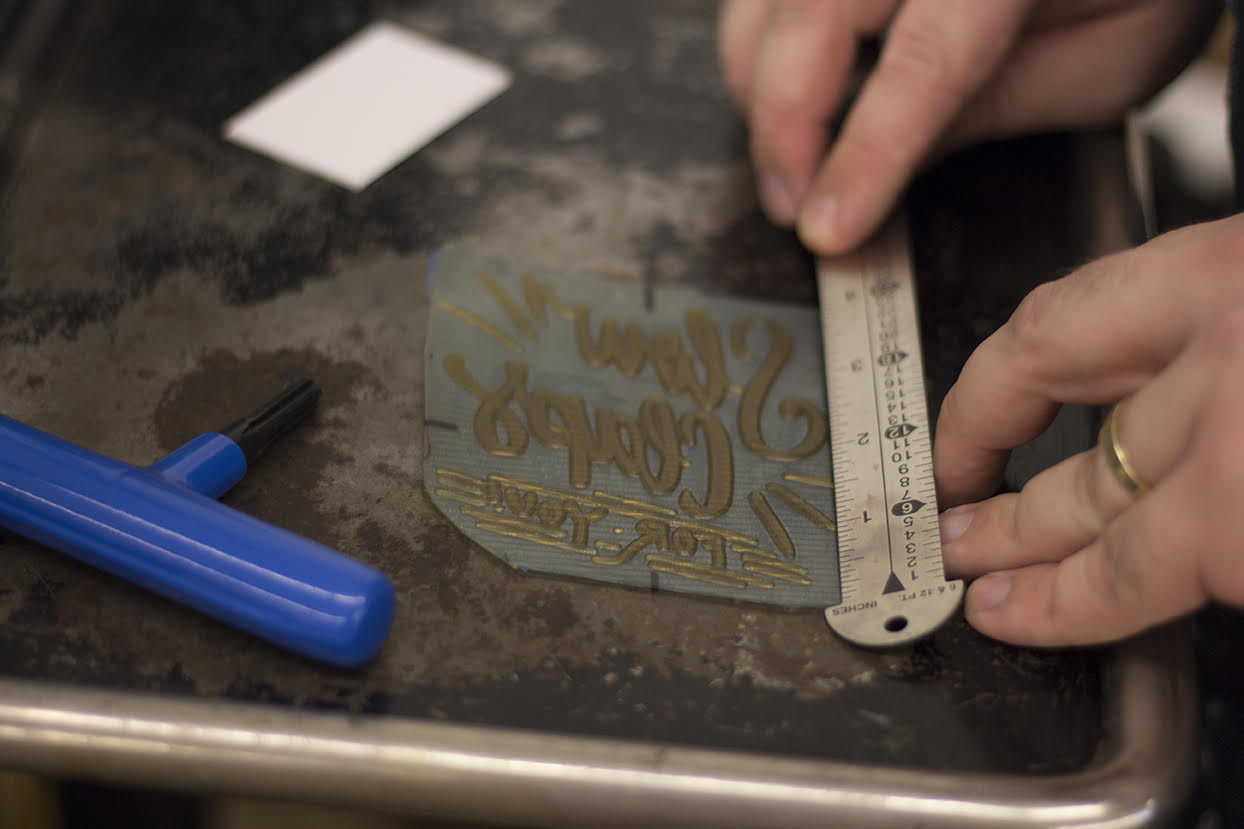
When we get the plates in, our pressman, Ross, uses our specific library of colors that we have mixed for our line. He’ll place the newly made photopolymer plate on the base, add the ink to the inkwell and start printing. It always takes some tries to get it just right, but once everything looks correct, we can print about 1200 cards in an hour on our Heidelberg Windmills. We usually print 400-800 of any given card to start out with unless we know it’s a best-seller, then we’ll print a couple thousand at a time.
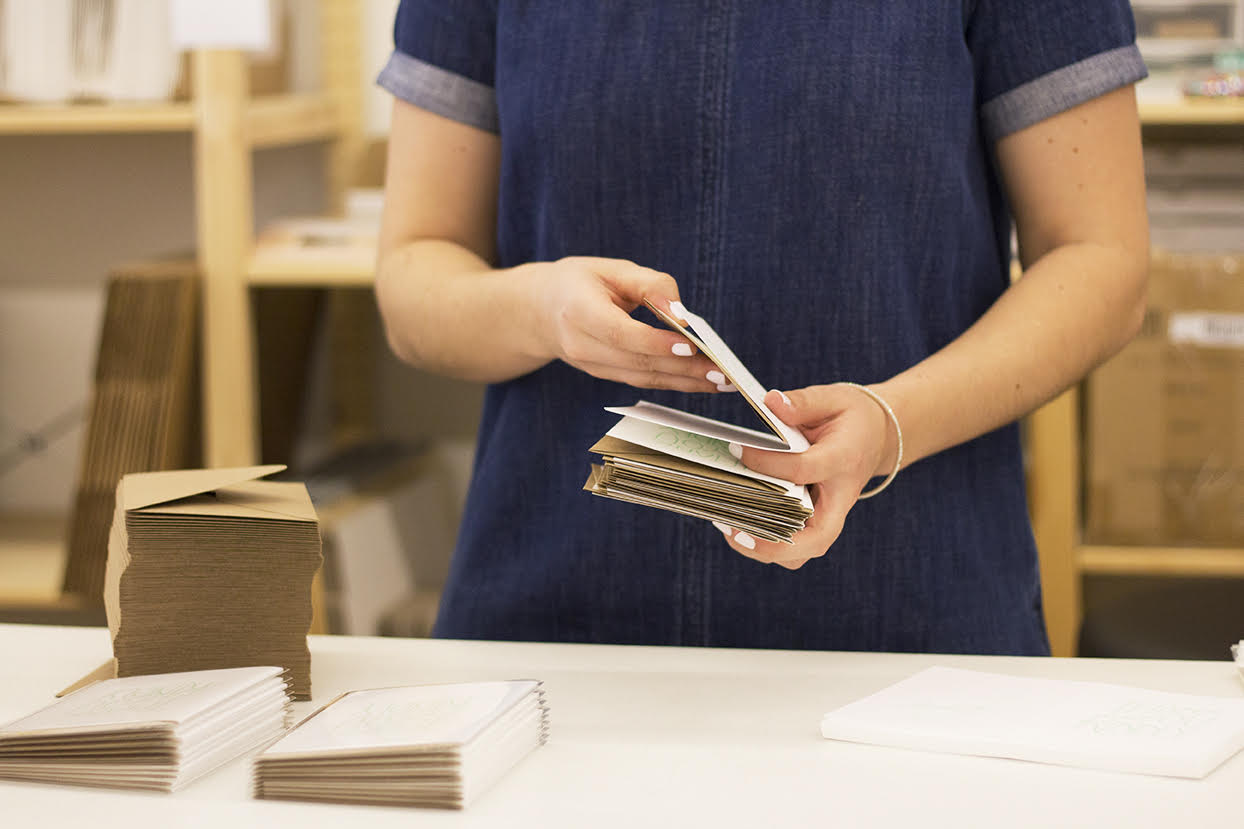
Once they’re printed and scored, we then pair them with envelopes and put them in cello sleeves for wholesale and retail. This is where my experience with Lean Logistics really comes in handy. We have very specific processes for folding such large volumes of cards so that we can maximize efficiency. Then, they hit the shelves and wait for someone to buy them to send to someone they love! It’s pretty awesome being in the business of spreading good vibes. 🙂
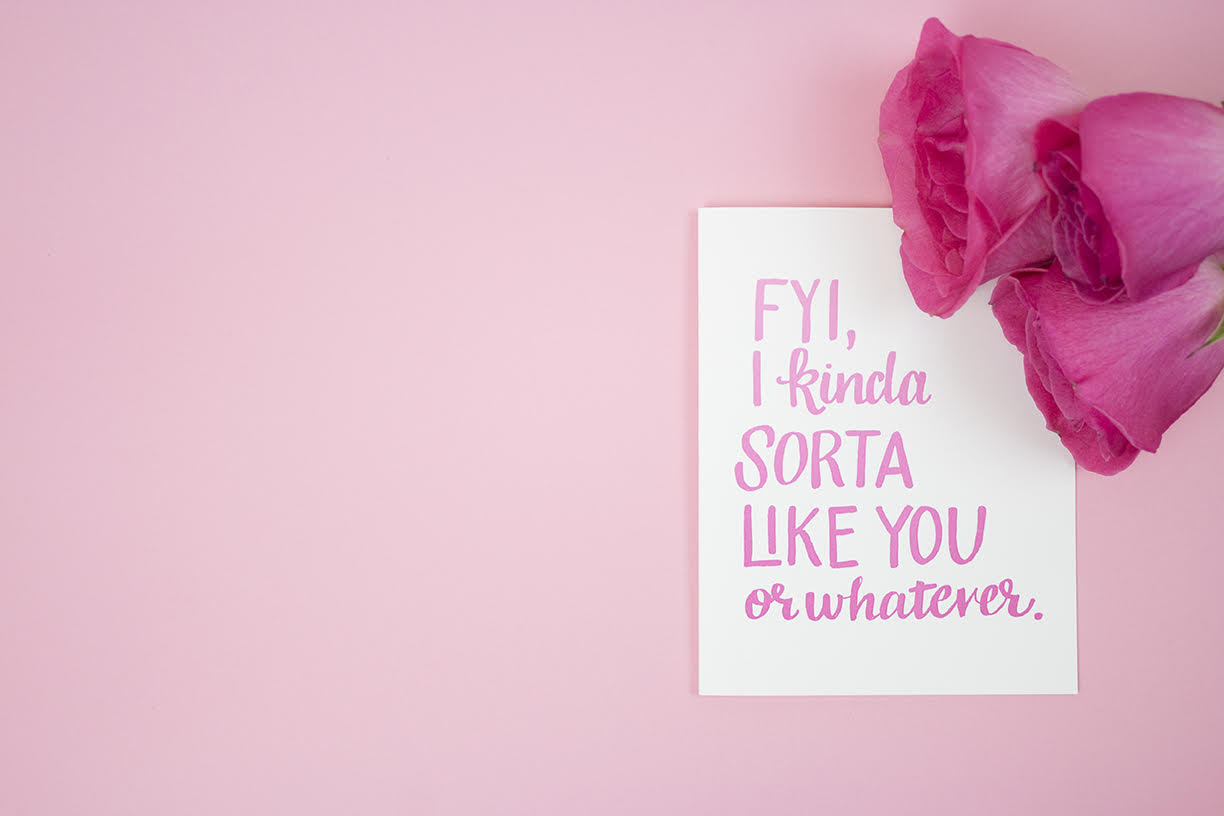
I spend most of my time doing about a dozen things at once. My days are filled with managerial tasks like paying bills, ordering products for the store, supplies for production, guiding employees with decisions, and taking meetings with custom clients. Every day is different, and very little of my time is spent actually getting to make artwork. I’m trying to change that though. One of the main reasons I have to make the artwork from home is because my role as the boss is always requiring me to answer questions and juggle many tasks simultaneously. It’s impossible to get in the zone and get into the deep, thoughtful work of creating artwork for products. It’s one of the biggest challenges of running this business along with finding time to make the work that moves our company forward. As a wholesale line, our success depends on consistently releasing new products several times a year. The sheer volume of keeping pace with the wholesale industry is very difficult when balancing so many other high-level aspects of my business. I have hired off a lot of tasks, but there are still just some things that I’m the only one who can handle.
Another big daily struggle is cash flow. We have a huge store to fill and, of course, we can’t sell what we don’t have. Our studio space quadrupled, along with our rent, payroll, and retail floor when we moved to Magazine Street last summer. Although our retail sales are through the roof, it’s still hard balancing all the payments going in and coming out. We are a wholesale line with a retail store, we also do custom wedding invitations, and host workshops frequently. It’s really important to have different verticals for our business, so that when one is slower, we can put energy into another to keep everything in flow. It’s not easy!
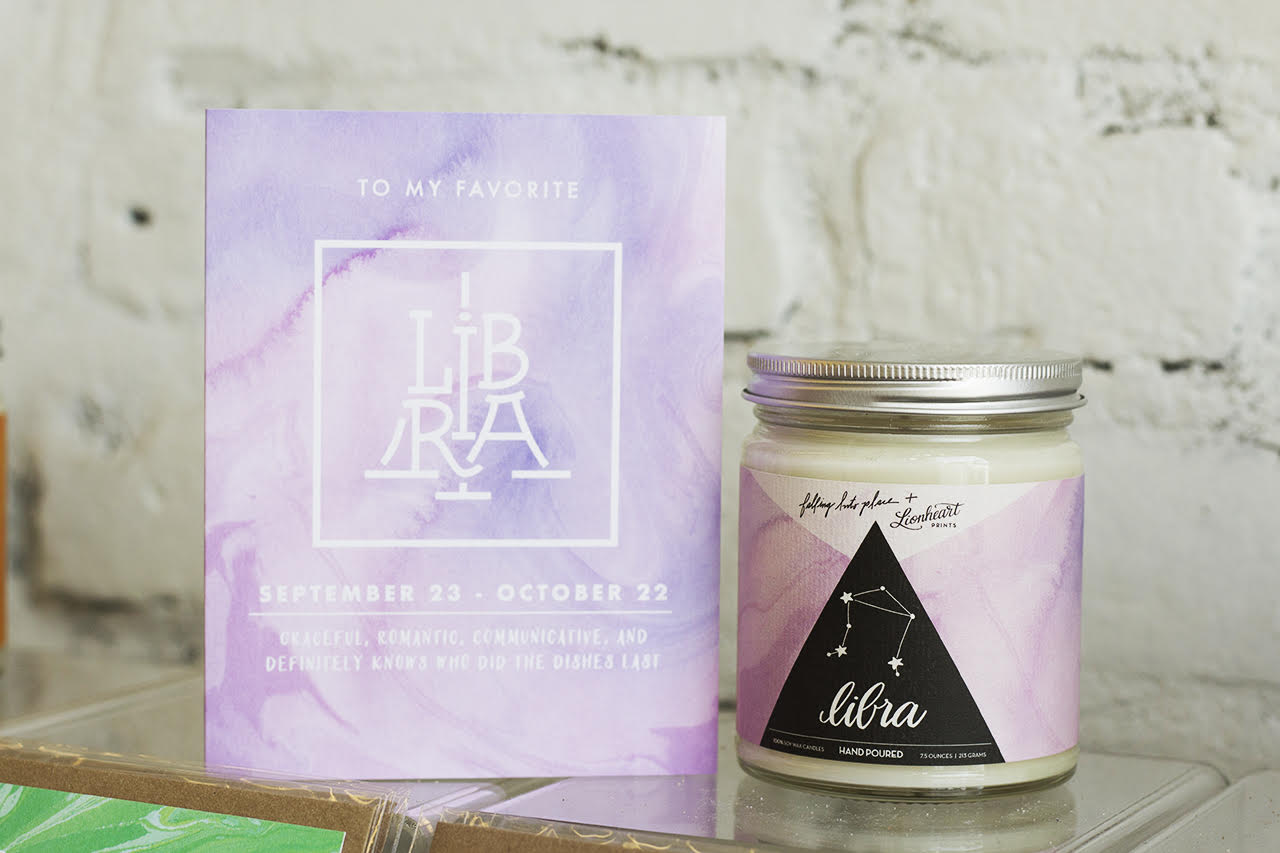
Photos courtesy of Lionheart Prints.
Want to be featured in the Behind the Stationery column? Reach out to Megan at megan [at] ohsobeautifulpaper [dot] com for more details.
